Wall molding has emerged as one of the most transformative design elements in modern homes, offering both aesthetic appeal and functional benefits. From traditional wainscoting to contemporary slat panels, these architectural details can instantly elevate any space by adding depth, character, and visual interest. Whether you're looking to create a sophisticated dining room, cozy bedroom retreat, or modern living space, wall molding provides endless possibilities for customization. The latest trends blend classic techniques with innovative materials, allowing homeowners to achieve everything from minimalist elegance to bold statement walls that serve as stunning focal points.
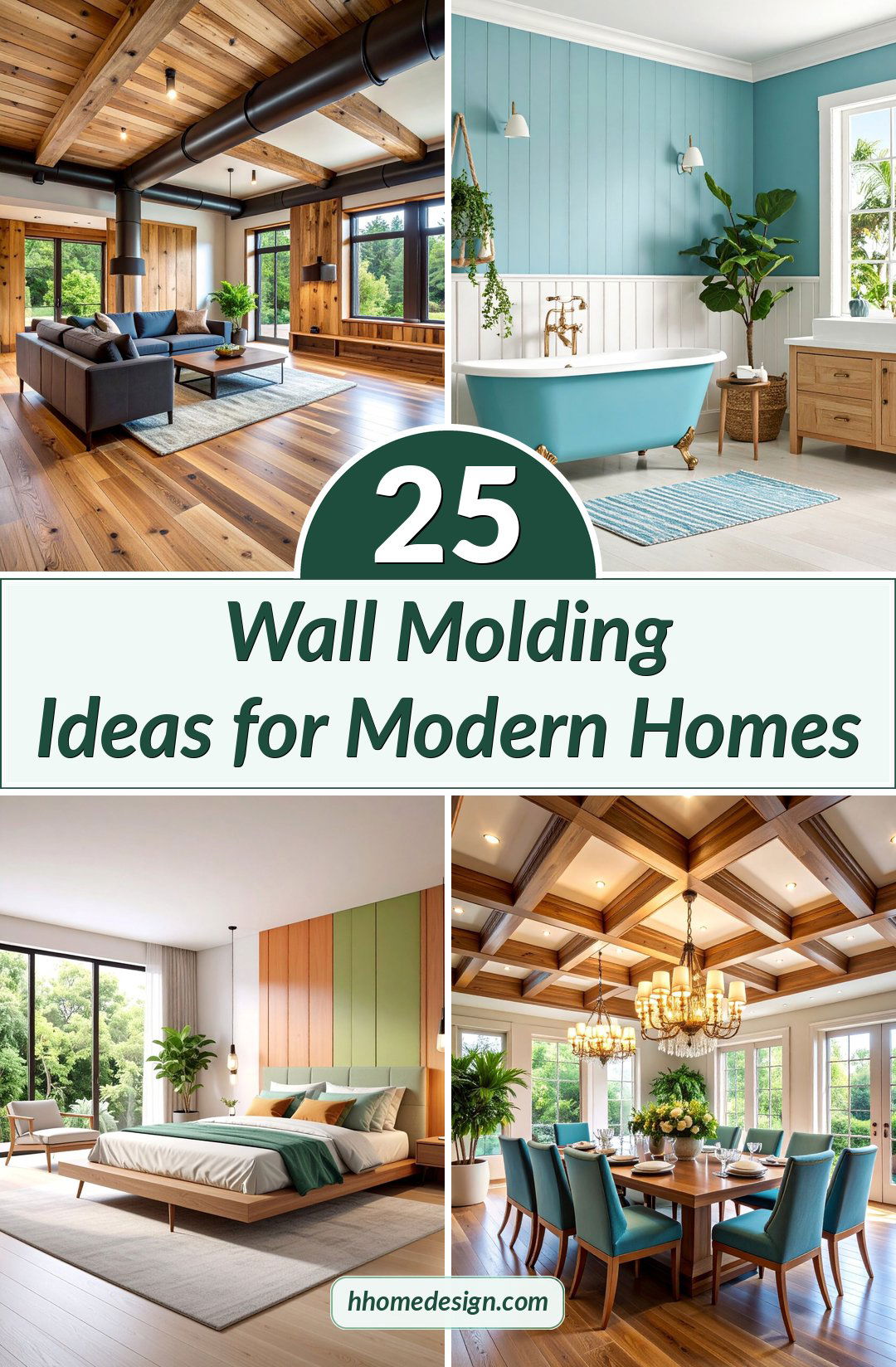
1. Classic Picture Frame Wainscoting with Chair Rail
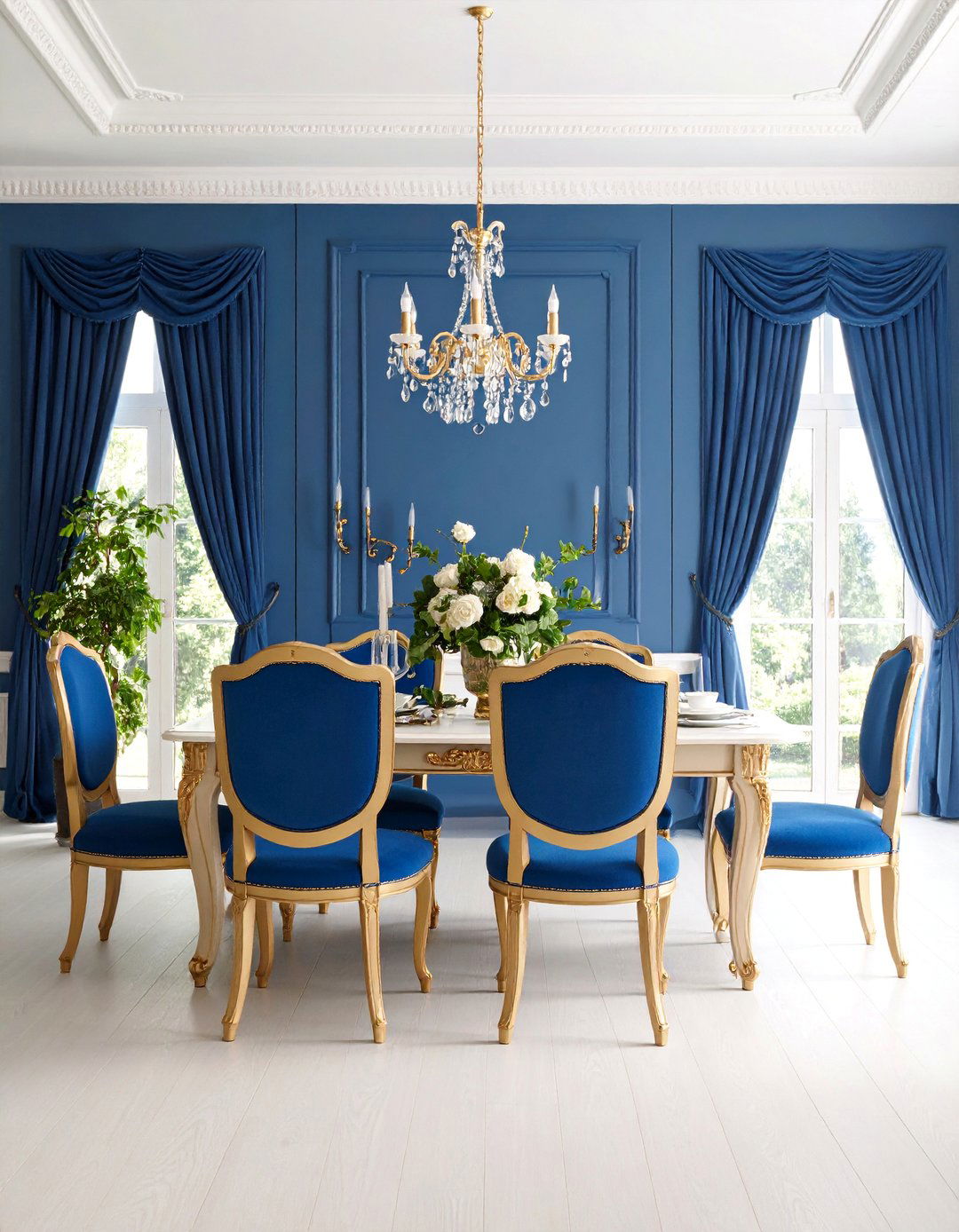
Transform your dining room into an elegant space by combining traditional picture frame molding with a sophisticated chair rail system. This timeless design features rectangular panels created with thin trim pieces, positioned below a horizontal chair rail that runs approximately one-third up the wall. Paint the lower panels in a rich, deep color like navy or forest green, while keeping the upper wall and molding in crisp white. The chair rail serves both decorative and protective purposes, preventing furniture damage while creating visual separation. Complete the look with crown molding at the ceiling line and substantial baseboards. This classic combination works beautifully in formal dining rooms, home offices, and entryways where you want to establish an atmosphere of refined sophistication.
2. Modern Vertical Slat Panel Feature Wall
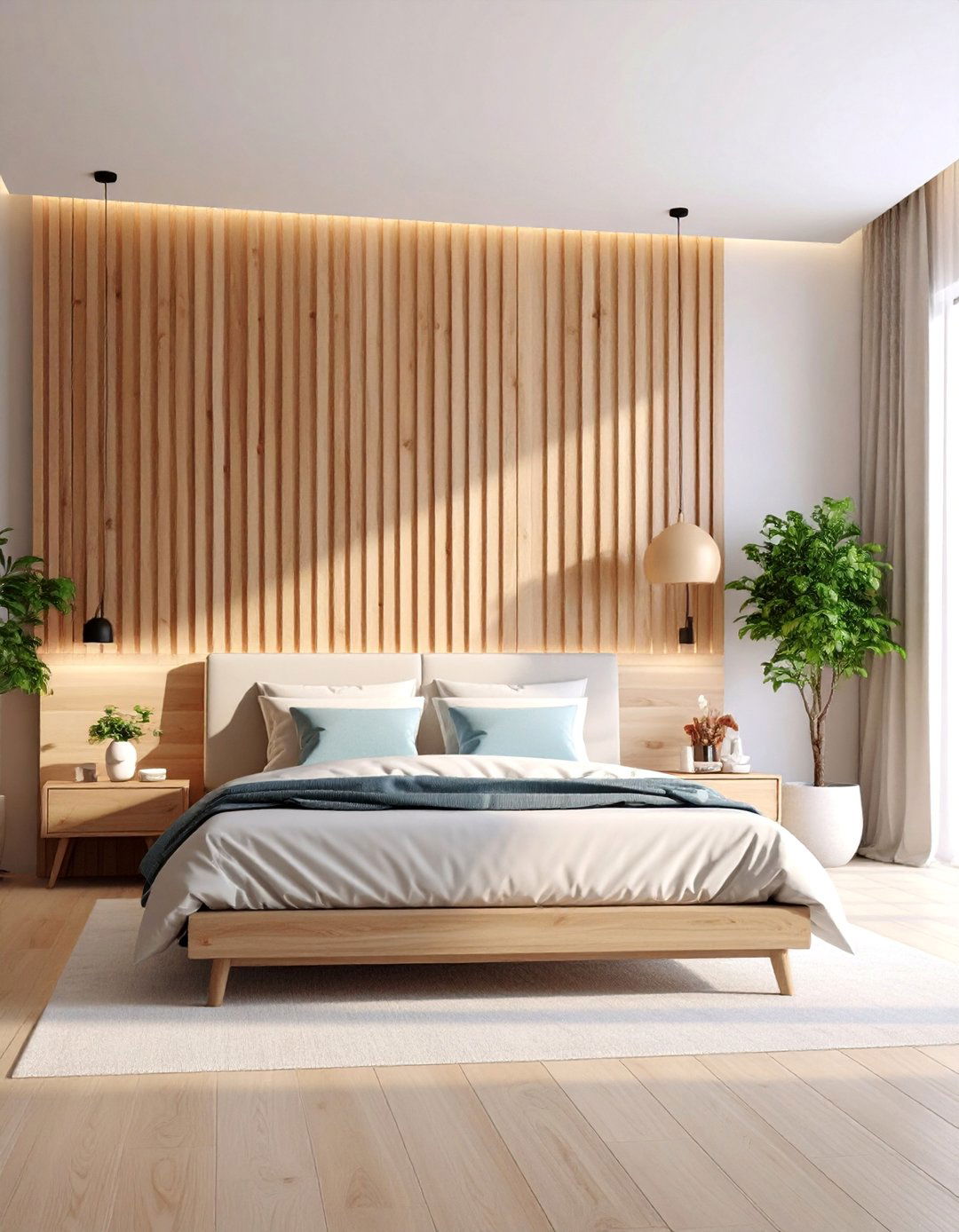
Create a contemporary focal point using sleek vertical wood slats arranged in a clean, minimalist pattern across an entire accent wall. Choose light oak or maple slats with consistent spacing between each piece, creating subtle shadow lines that add depth and texture. Mount the slats over a contrasting backing material like charcoal paint or black felt for dramatic effect. This design works exceptionally well behind beds in master bedrooms or as a statement wall in modern living rooms. Incorporate integrated LED strip lighting behind the slats to create a warm, ambient glow that highlights the natural wood grain. The vertical orientation draws the eye upward, making ceilings appear higher while maintaining the clean, uncluttered aesthetic that defines contemporary interior design.
3. Farmhouse Board and Batten with Rustic Charm
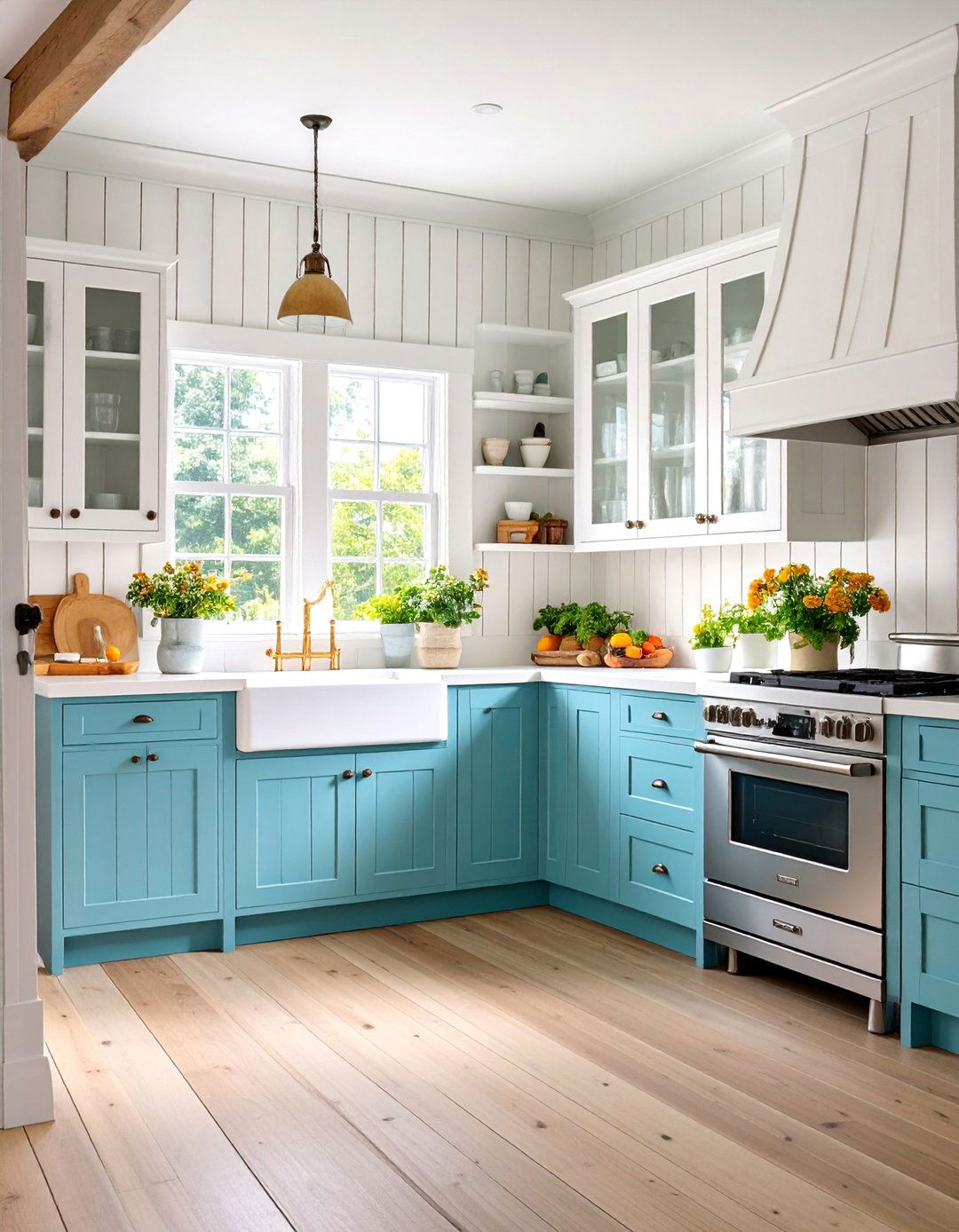
Achieve the popular farmhouse aesthetic by installing board and batten paneling that covers the lower half of your walls, topped with a substantial cap rail. Use wide vertical boards spaced evenly across the wall surface, then add narrower batten strips to cover the seams. Paint everything in classic white or soft cream to maintain the bright, airy feel characteristic of farmhouse style. This treatment works beautifully in kitchens, mudrooms, and casual dining areas where durability meets style. The lower paneling protects walls from daily wear while the rustic texture adds warmth and character. Complete the look with vintage-inspired hardware, natural wood furniture, and neutral color palettes that emphasize comfort and simplicity.
4. Sophisticated Crown Molding with Ceiling Medallions
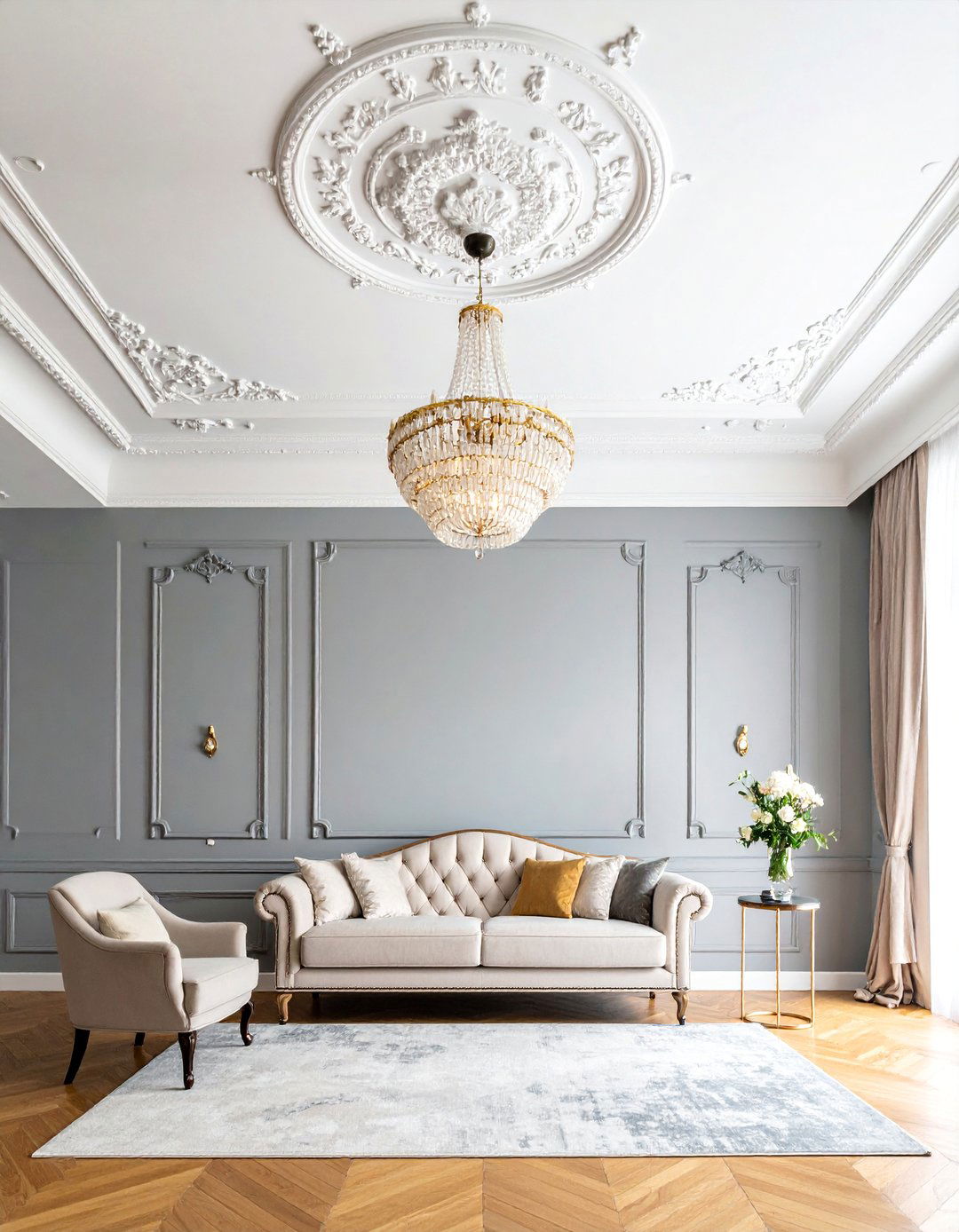
Elevate your formal living spaces by combining ornate crown molding with decorative ceiling medallions around light fixtures. Choose crown molding with multiple layers and intricate detailing that complements your home's architectural style. Install matching ceiling medallions around chandeliers or pendant lights to create cohesive focal points that draw attention upward. Paint both elements in a contrasting color to the walls, such as crisp white against soft gray walls, to make the architectural details pop. This combination works particularly well in dining rooms, formal living rooms, and master bedrooms where you want to create an sense of luxury and grandeur. The interplay between horizontal crown lines and circular medallions adds visual interest while maintaining classical proportions.
5. Contemporary Geometric Panel Design

Design a striking modern accent wall using geometric molding patterns that create bold visual impact through repetition and contrast. Arrange rectangular or square panels in asymmetrical configurations, mixing different sizes to create dynamic compositions. Use flat, clean-lined molding painted in the same color as the wall for a monochromatic, sculptural effect that emphasizes form over ornament. This approach works exceptionally well in contemporary homes, modern offices, or minimalist bedrooms where architectural interest replaces traditional decoration. Consider backlighting some panels with LED strips or incorporating different textures within each frame. The geometric precision creates a sophisticated backdrop that complements modern furniture and artwork while maintaining the clean aesthetic essential to contemporary design.
6. Shiplap Accent Wall with Industrial Touches
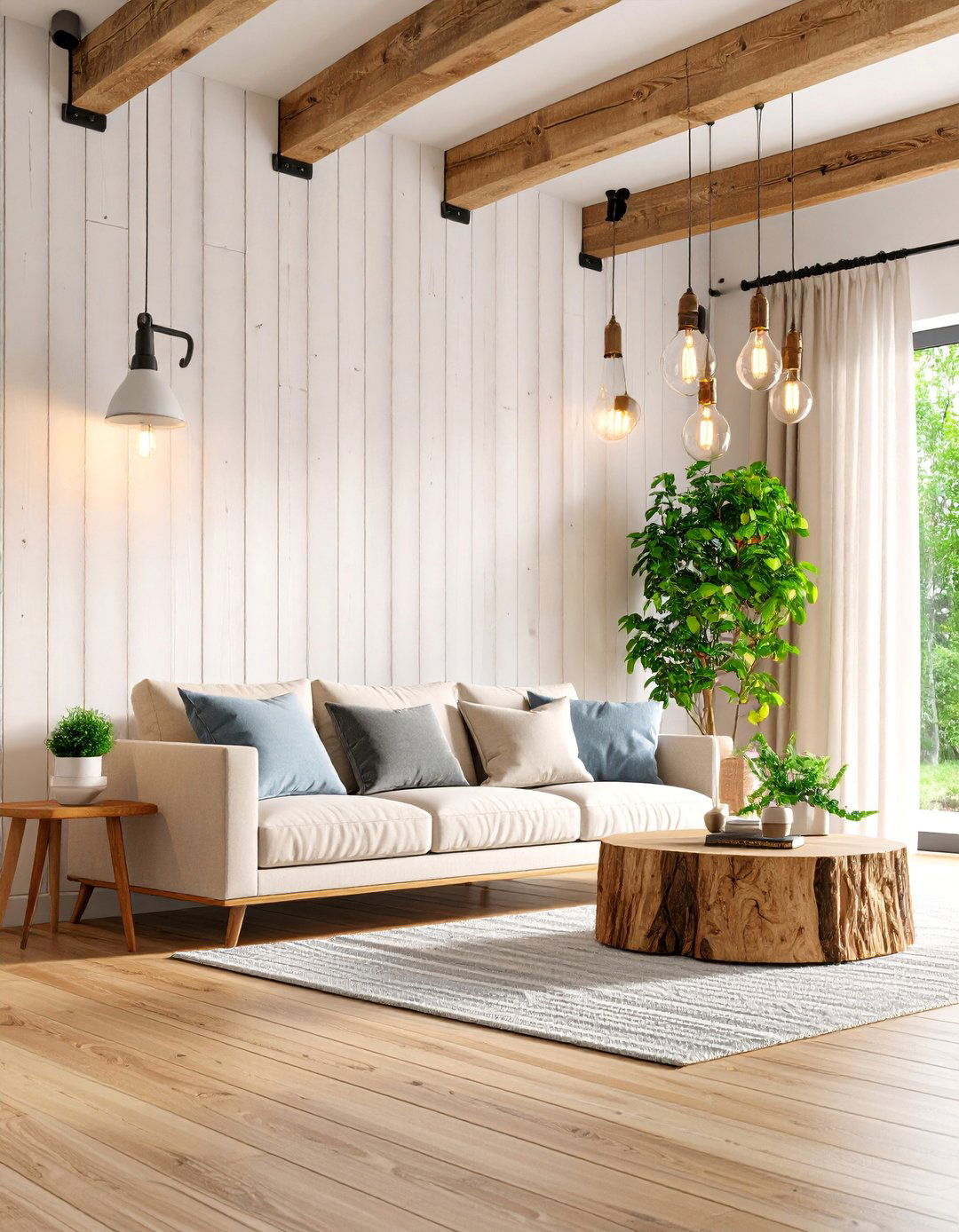
Create a modern farmhouse vibe by installing horizontal shiplap planks across a feature wall, enhanced with industrial-inspired metal accents. Choose wide shiplap boards with subtle gaps between each plank, painted in soft white or light gray. Add black metal pipe brackets or industrial-style lighting fixtures to create contrast against the rustic wood texture. This combination works beautifully in family rooms, home offices, or casual dining areas where comfort meets style. The horizontal lines make rooms appear wider while the shiplap texture adds warmth and character. Include floating shelves made from reclaimed wood and metal brackets to enhance the industrial farmhouse aesthetic. This design bridges traditional and contemporary styles, creating spaces that feel both timeless and current.
7. Elegant Coffered Ceiling Treatment
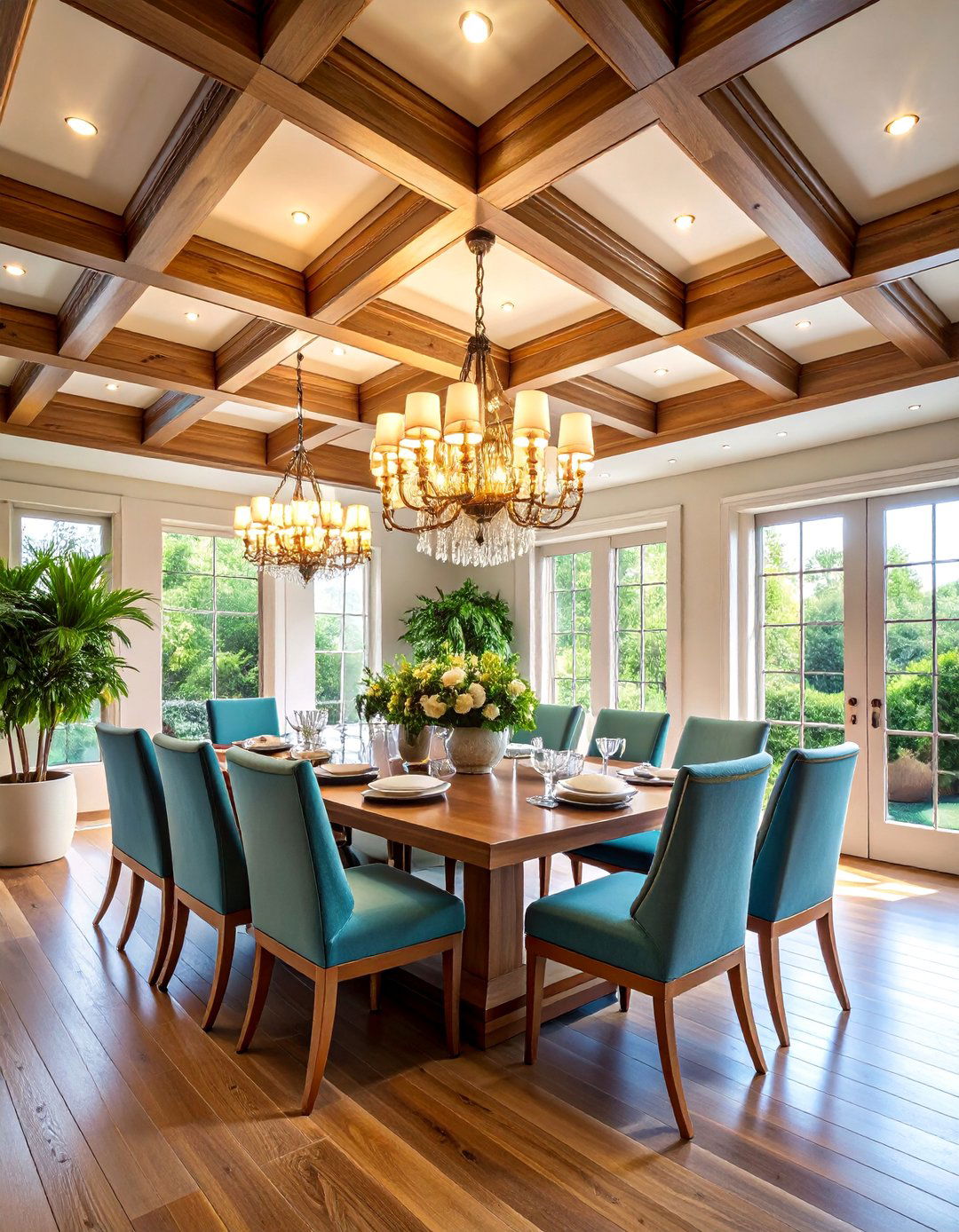
Transform your ceiling into a stunning architectural feature by creating a coffered design using intersecting beams and decorative molding. Install a grid pattern of substantial wood beams across the ceiling, then add crown molding within each recessed section. Paint the recessed areas in a slightly darker shade than the beams to create depth and definition. This treatment works exceptionally well in dining rooms, libraries, and formal living spaces where you want to create an atmosphere of traditional elegance. The geometric grid pattern adds visual interest overhead while the multiple layers of molding create rich shadow lines. Consider adding rope lighting or recessed fixtures within some coffers for ambient illumination that highlights the architectural details.
8. Minimalist Flat Panel Molding System
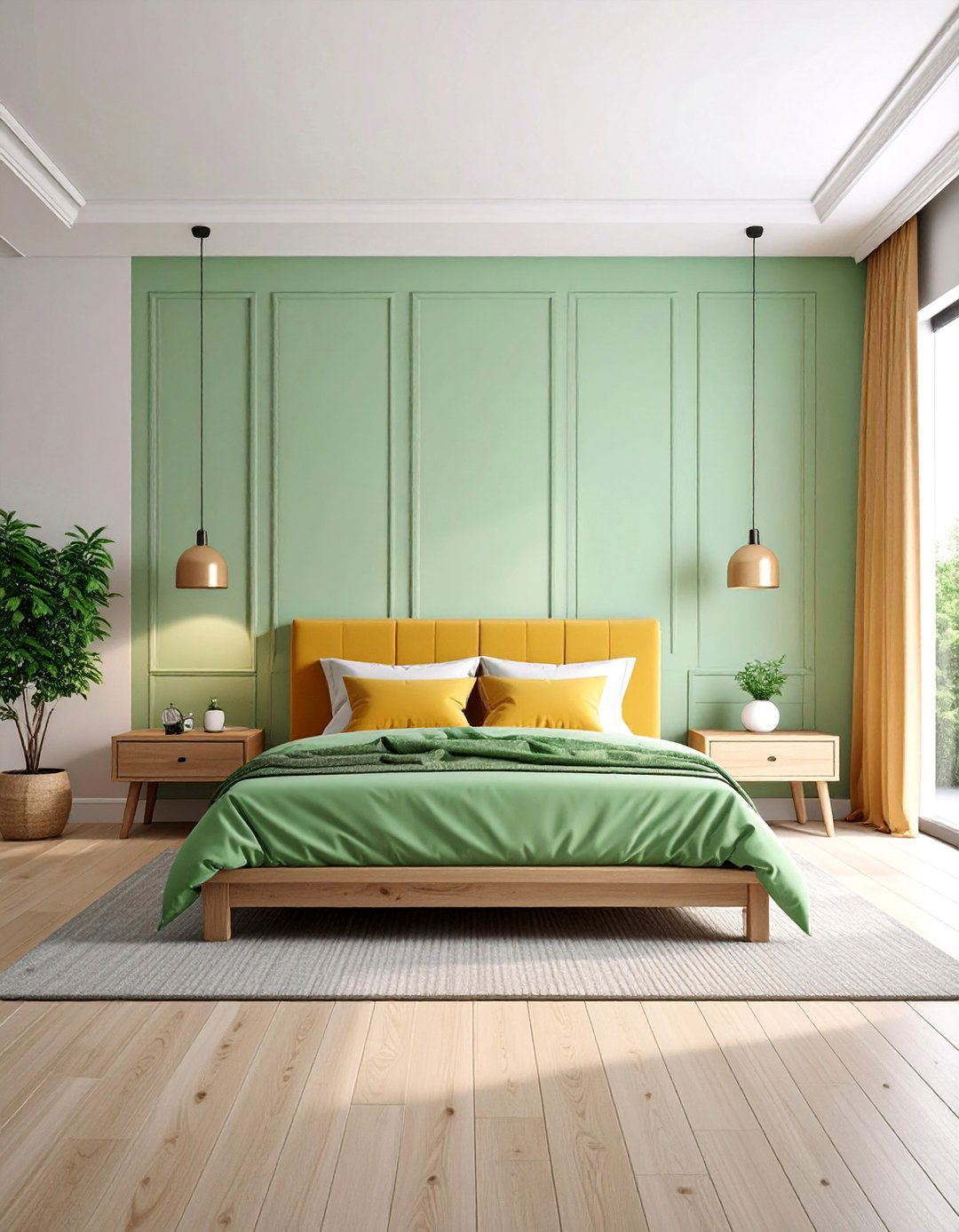
Achieve contemporary sophistication using flat, streamlined molding to create clean panel designs that emphasize geometric precision over ornate detail. Install thin, rectangular frames across wall surfaces using molding with minimal profile depth, painted to match the wall color exactly. This creates subtle shadow lines that define space without overwhelming the architecture. The monochromatic approach works beautifully in modern bedrooms, contemporary living rooms, or minimalist home offices where simplicity is paramount. Vary panel sizes and arrangements to create visual interest while maintaining the clean aesthetic. This treatment provides architectural character without competing with modern furniture or artwork, making it ideal for spaces where less is definitely more. The result is sophisticated and timeless, avoiding trendy details that might date quickly.
9. Traditional Raised Panel Wainscoting

Create classic elegance in formal spaces using traditional raised panel wainscoting that extends approximately 36 inches up the wall. Each panel features a raised center section surrounded by decorative frame molding, creating dimensional depth and traditional charm. Top the panels with a substantial chair rail and finish with detailed baseboards below. Paint the panels in rich, sophisticated colors like deep blue, forest green, or classic white for versatility. This treatment works beautifully in formal dining rooms, traditional libraries, or colonial-style homes where historical accuracy matters. The raised panels create interesting shadow lines throughout the day as light changes, adding dynamic visual interest. Complete the look with crown molding at the ceiling line to create a fully developed architectural system that feels both substantial and refined.
10. Modern Acoustic Slat Wall Design

Combine style with function by installing acoustic slat panels that reduce noise while creating a stunning contemporary feature wall. Choose wood slats with acoustic backing material, arranged vertically with consistent spacing to create both visual rhythm and sound absorption. This design works exceptionally well in home theaters, music rooms, or open-plan living areas where noise control is important. Select warm wood tones like walnut or oak to add natural warmth to modern interiors. The linear pattern draws the eye upward while the acoustic properties improve room functionality. Consider incorporating integrated lighting between some slats or adding small display shelves for decorative objects. This practical solution demonstrates how functional elements can become beautiful architectural features that enhance both the aesthetics and performance of interior spaces.
11. Beadboard Bathroom Wainscoting with Maritime Flair
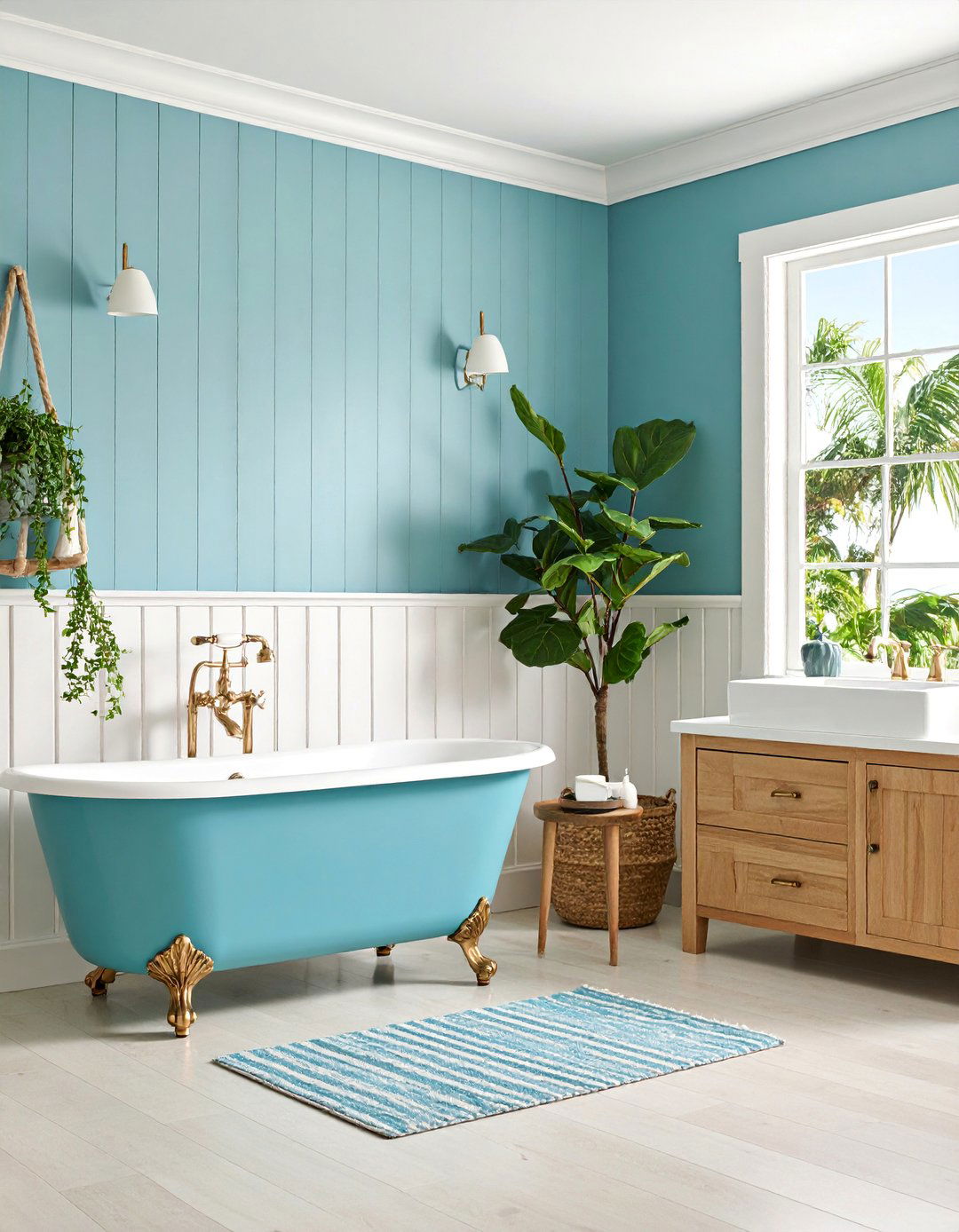
Transform your bathroom into a coastal retreat using beadboard wainscoting that extends halfway up the walls, painted in crisp white or soft blue tones. The vertical grooves characteristic of beadboard add texture and visual interest while providing practical protection against moisture and daily wear. Top the beadboard with a simple chair rail and complement with white subway tile or nautical-themed wallpaper above. This treatment works beautifully in powder rooms, guest bathrooms, or any space where you want to evoke seaside charm. The vertical lines make ceilings appear higher while the traditional material adds timeless appeal. Include brass or brushed nickel fixtures, rope details, and natural materials like jute rugs to complete the coastal aesthetic that feels both relaxed and sophisticated.
12. Art Deco Inspired Molding with Metallic Accents
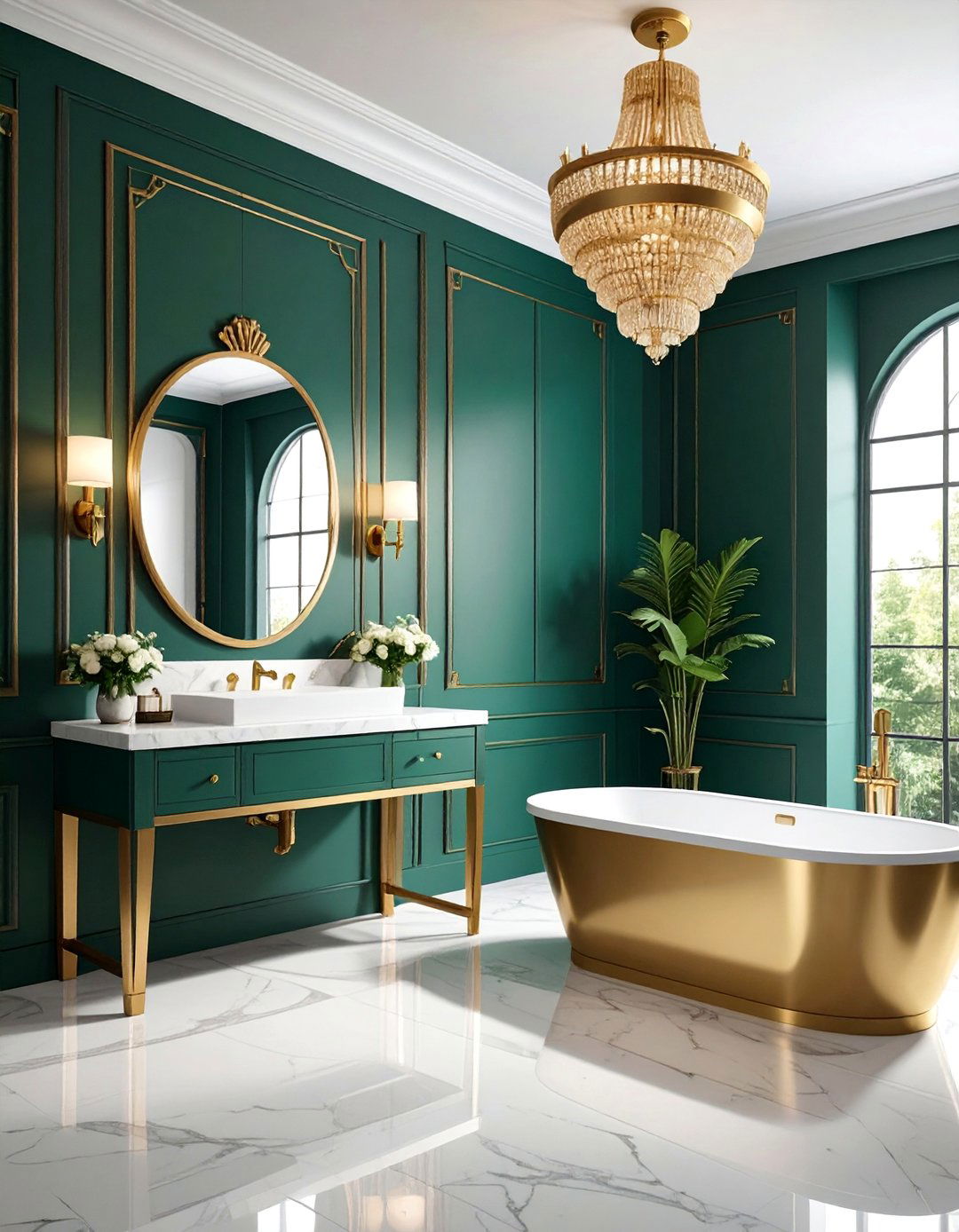
Create glamorous sophistication by incorporating Art Deco-inspired molding patterns enhanced with metallic paint finishes that catch and reflect light. Design geometric patterns using stepped molding profiles that create dramatic shadow lines, then highlight certain elements with gold, silver, or bronze metallic paint. This approach works beautifully in powder rooms, formal dining rooms, or entertainment spaces where drama is desired. The angular geometry and metallic accents create a sense of luxury reminiscent of the roaring twenties. Combine with rich wall colors like deep emerald, navy, or burgundy to enhance the glamorous effect. Include period-appropriate lighting fixtures and mirrored surfaces to amplify the metallic elements. This style celebrates ornament and luxury, creating spaces that feel both theatrical and sophisticated.
13. Rustic Reclaimed Wood Panel Feature
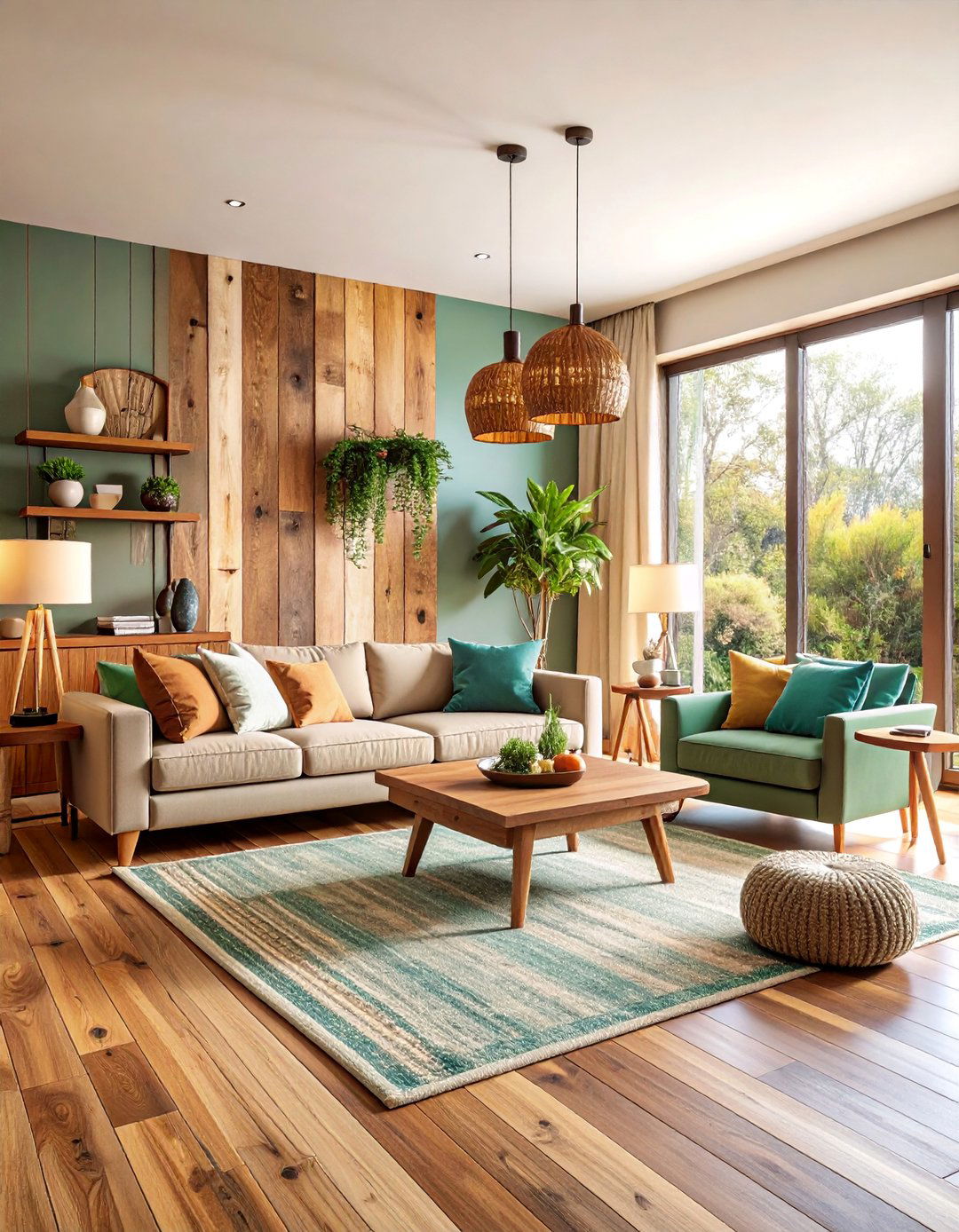
Design an eco-friendly accent wall using reclaimed wood panels that showcase natural weathering, knots, and grain patterns for authentic rustic character. Arrange planks of varying widths horizontally or vertically, leaving natural gaps and imperfections visible to enhance the aged appearance. This treatment works beautifully in family rooms, bedrooms, or casual dining areas where warmth and character are priorities. The sustainable material choice appeals to environmentally conscious homeowners while creating unique focal points that tell stories through weathered surfaces. Seal the wood with clear protective finishes to preserve the natural patina while making cleaning easier. Include wrought iron hardware, vintage accessories, and natural textiles to complete the rustic aesthetic that celebrates imperfection and authenticity over pristine perfection.
14. Contemporary 3D Textured Wall Panels

Create dramatic visual impact using three-dimensional textured panels that cast interesting shadows and add sculptural quality to wall surfaces. Choose panels with wave patterns, geometric reliefs, or organic textures that create depth and movement. Install these across entire accent walls or in smaller sections to create focal points. This treatment works exceptionally well in modern living rooms, contemporary bedrooms, or commercial spaces where artistic impact is desired. The changing light throughout the day creates dynamic shadow patterns that keep the wall visually interesting. Paint panels in monochromatic colors to emphasize texture over color, or use contrasting hues to make the dimensional elements pop. This approach treats walls as sculptural canvases rather than simple flat surfaces.
15. Traditional Chair Rail with Two-Tone Paint Treatment
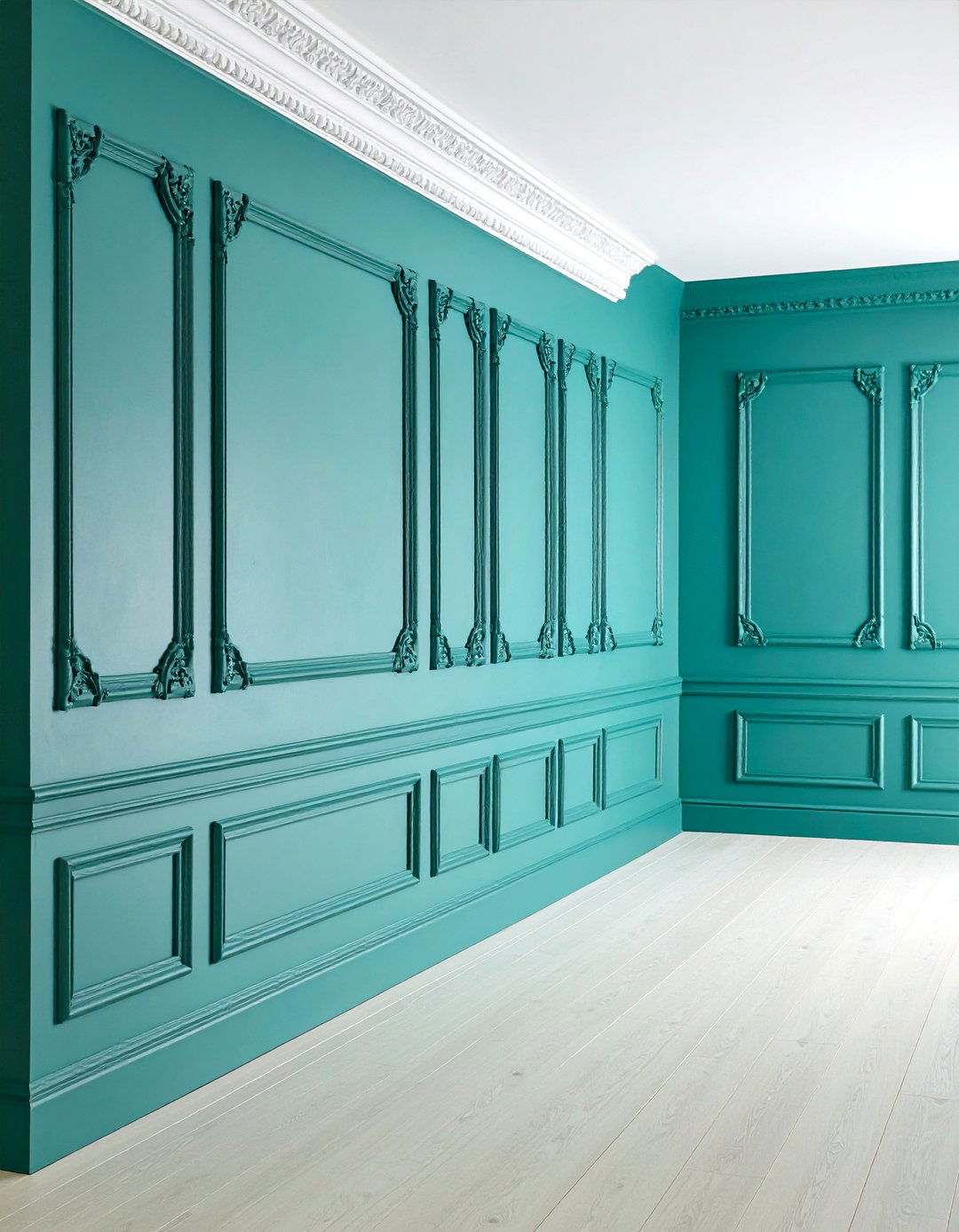
Establish classic proportions and visual interest by installing chair rail molding that divides walls horizontally, allowing for sophisticated two-tone paint schemes. Position the chair rail approximately 32-36 inches from the floor, then paint the lower section in a darker, richer color while keeping the upper portion light and airy. This treatment works beautifully in dining rooms, hallways, and formal living spaces where traditional elegance is desired. The horizontal division makes rooms feel more intimate and properly proportioned while protecting walls from furniture damage. Choose paint colors that complement each other while providing enough contrast to emphasize the architectural division. Include coordinating crown molding and substantial baseboards to create a complete traditional molding system that feels balanced and historically appropriate.
16. Modern Floating Panel System

Achieve contemporary sophistication using floating panels that appear to hover slightly away from wall surfaces, creating subtle shadow lines and dimensional depth. Mount rectangular or square panels with hidden brackets that maintain clean edges without visible hardware. This treatment works beautifully in modern bedrooms, contemporary living rooms, or minimalist offices where architectural interest enhances rather than competes with furnishings. Paint panels and walls in coordinating neutral tones to emphasize form over color. The floating effect creates visual lightness while providing opportunities for integrated lighting or display purposes. This approach demonstrates how traditional paneling concepts can be reinterpreted for contemporary aesthetics, maintaining architectural character while embracing modern design principles that prioritize clean lines and uncluttered surfaces.
17. Victorian-Inspired Ornate Crown and Ceiling Design

Create period-appropriate grandeur by combining elaborate crown molding with decorative ceiling treatments that reflect Victorian-era craftsmanship and attention to detail. Install multi-layered crown molding with intricate profiles, then enhance ceilings with decorative plaster medallions, border treatments, or even wallpaper. This treatment works beautifully in historic homes, formal dining rooms, or any space where historical accuracy and dramatic impact are priorities. The layered approach creates rich shadow lines and visual complexity that was prized during the Victorian period. Paint all elements in coordinating colors that enhance rather than compete with ornate furniture and rich fabrics. Include period-appropriate lighting fixtures like chandeliers or elaborate sconces to complete the historical aesthetic that celebrates craftsmanship and decorative abundance.
18. Industrial Pipe and Wood Molding Hybrid
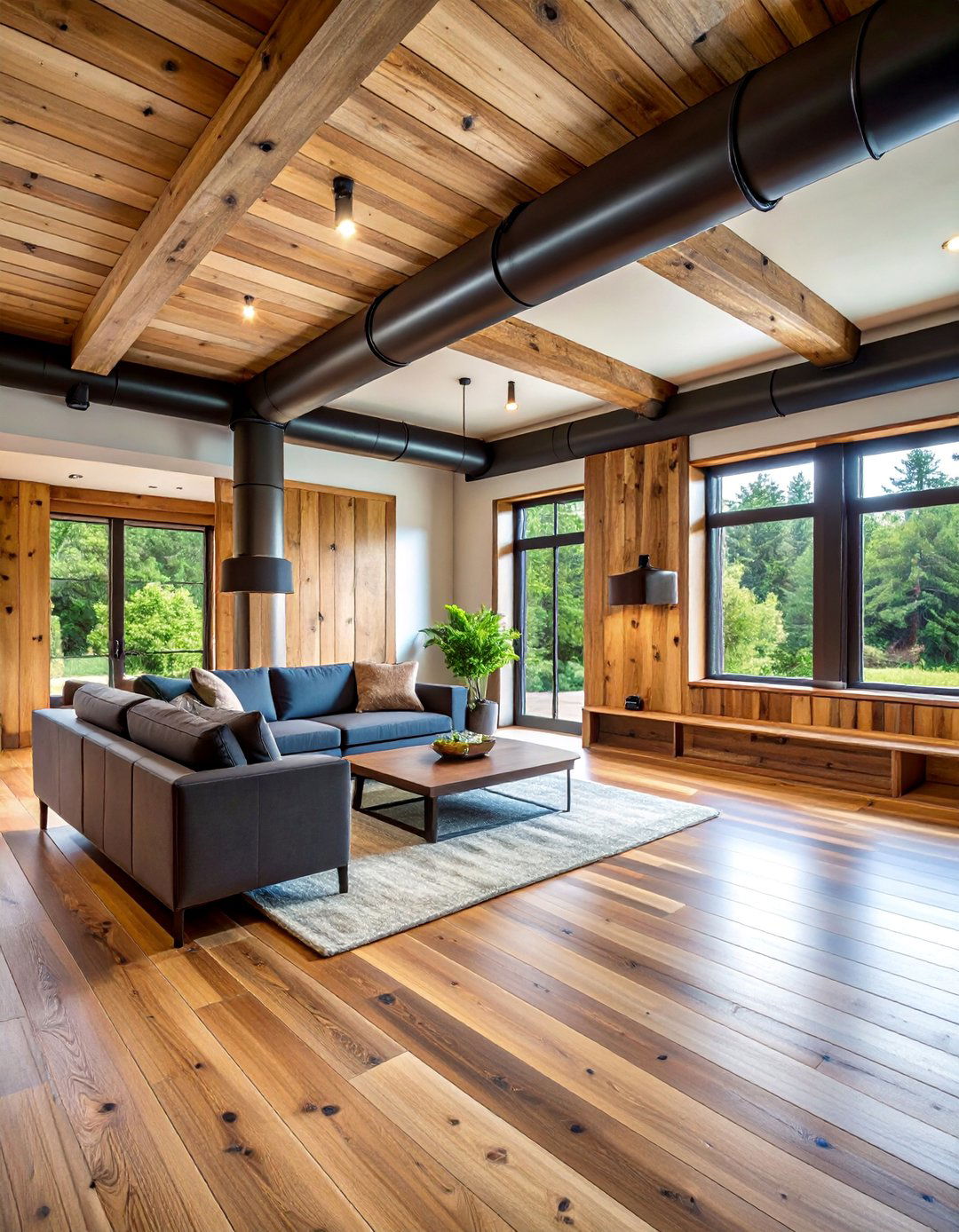
Combine raw industrial materials with warm wood elements to create unique molding systems that bridge rustic and contemporary aesthetics. Use black iron pipes as horizontal rails combined with reclaimed wood panels or vertical slats for an urban loft feel. This treatment works exceptionally well in basement family rooms, home offices, or casual dining areas where industrial chic is desired. The contrast between hard metal and warm wood creates visual interest while maintaining the honest material expression valued in industrial design. Include exposed hardware, metal brackets, and utilitarian lighting fixtures to complete the aesthetic. This approach celebrates functional materials and authentic construction methods while creating comfortable, livable spaces that feel both urban and welcoming.
19. Tray Ceiling with Integrated Molding Design

Transform ordinary flat ceilings into architectural features by creating tray designs enhanced with coordinated molding treatments that add depth and visual interest overhead. Step the ceiling up in the center portion, then define edges with crown molding and add decorative elements within the raised section. This treatment works beautifully in master bedrooms, formal dining rooms, or living rooms where architectural drama is desired. The multi-level approach creates opportunities for integrated lighting, paint color variation, or even decorative plaster work. Include rope lighting or recessed fixtures within the tray to provide ambient illumination that highlights the architectural details. This ceiling treatment makes rooms feel larger and more luxurious while providing opportunities for creative expression through color and lighting design.
20. Scandinavian-Inspired Natural Wood Slat Wall
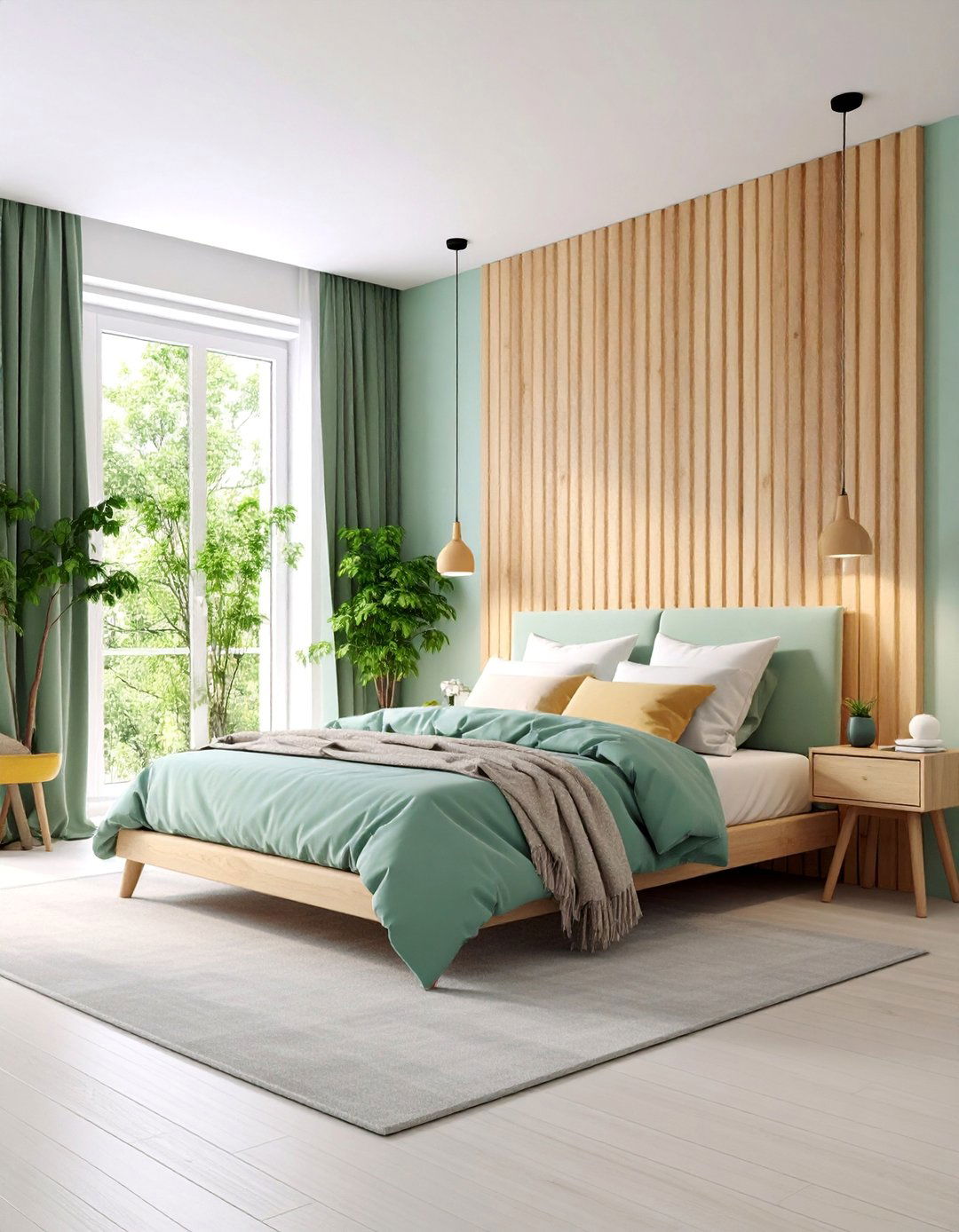
Embrace Nordic design principles using light-colored wood slats arranged in clean, simple patterns that emphasize natural materials and functional beauty. Choose pale woods like birch, pine, or light oak with minimal finishing to maintain natural color and grain patterns. This treatment works beautifully in bedrooms, home offices, or living areas where serene, uncluttered aesthetics are desired. The vertical orientation and light colors make spaces feel larger and more open while the natural material adds warmth without overwhelming minimalist furnishings. Include simple, functional furniture in neutral colors and limit decorative accessories to maintain the clean, purposeful aesthetic that defines Scandinavian design. This approach celebrates natural materials and craftsmanship while creating calm, restorative environments.
21. Mediterranean Arched Niche Molding Treatment
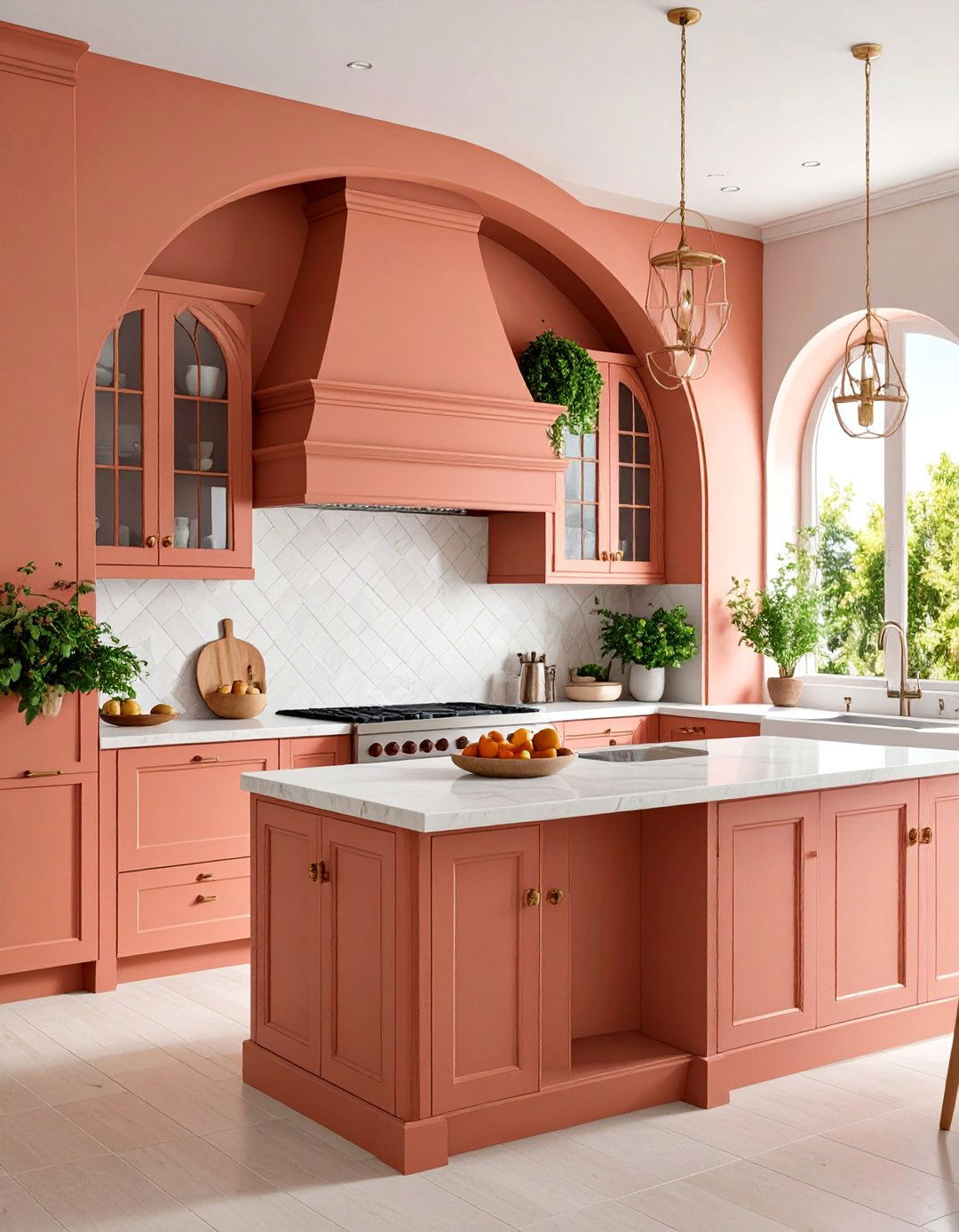
Create Old World charm by installing arched molding treatments that frame built-in niches, display areas, or decorative alcoves reminiscent of Mediterranean architecture. Use curved molding profiles to create graceful arch shapes, then enhance with decorative keystones or carved details. This treatment works beautifully in kitchens, dining rooms, or entryways where European elegance is desired. The curved lines soften rectangular room geometries while providing opportunities for displaying artwork, plants, or decorative objects. Paint molding in warm, earthy colors like terracotta, ochre, or deep cream to enhance the Mediterranean feeling. Include natural materials like stone, tile, and wrought iron to complete the aesthetic that celebrates craftsmanship and regional architectural traditions.
22. Modern LED-Integrated Molding System
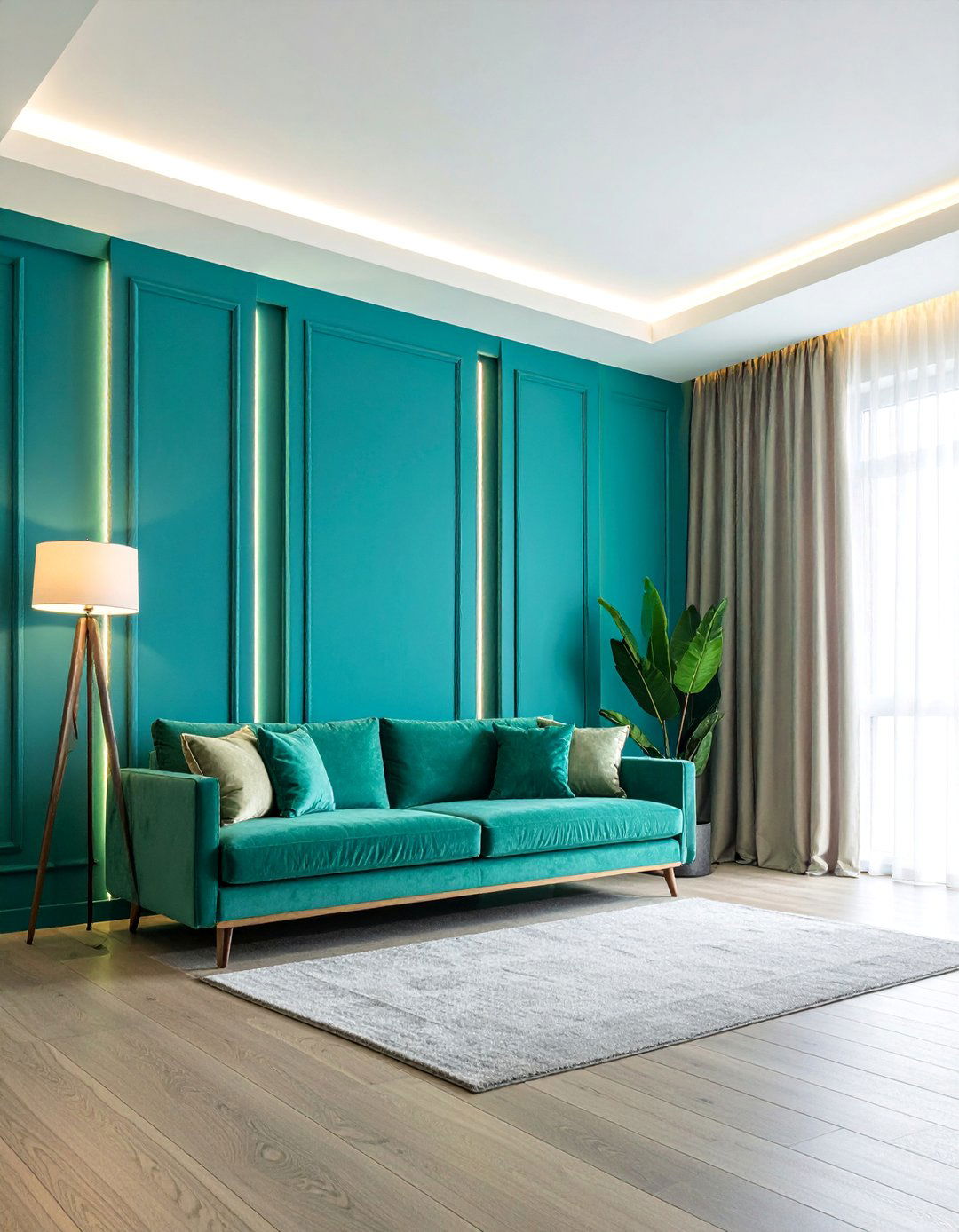
Combine contemporary molding design with integrated LED lighting to create architectural features that provide both visual interest and functional illumination. Install molding profiles designed to conceal LED strip lights, creating clean lines of light along walls or ceilings. This treatment works exceptionally well in modern living rooms, contemporary kitchens, or home theaters where sophisticated lighting control is important. The integrated approach eliminates visible fixtures while providing smooth, even illumination that can be dimmed or color-changed. Choose molding profiles that complement modern architecture while concealing technical components. This fusion of form and function demonstrates how traditional architectural elements can be enhanced with modern technology to create spaces that are both beautiful and highly functional.
23. Transitional Mixed-Width Panel Design
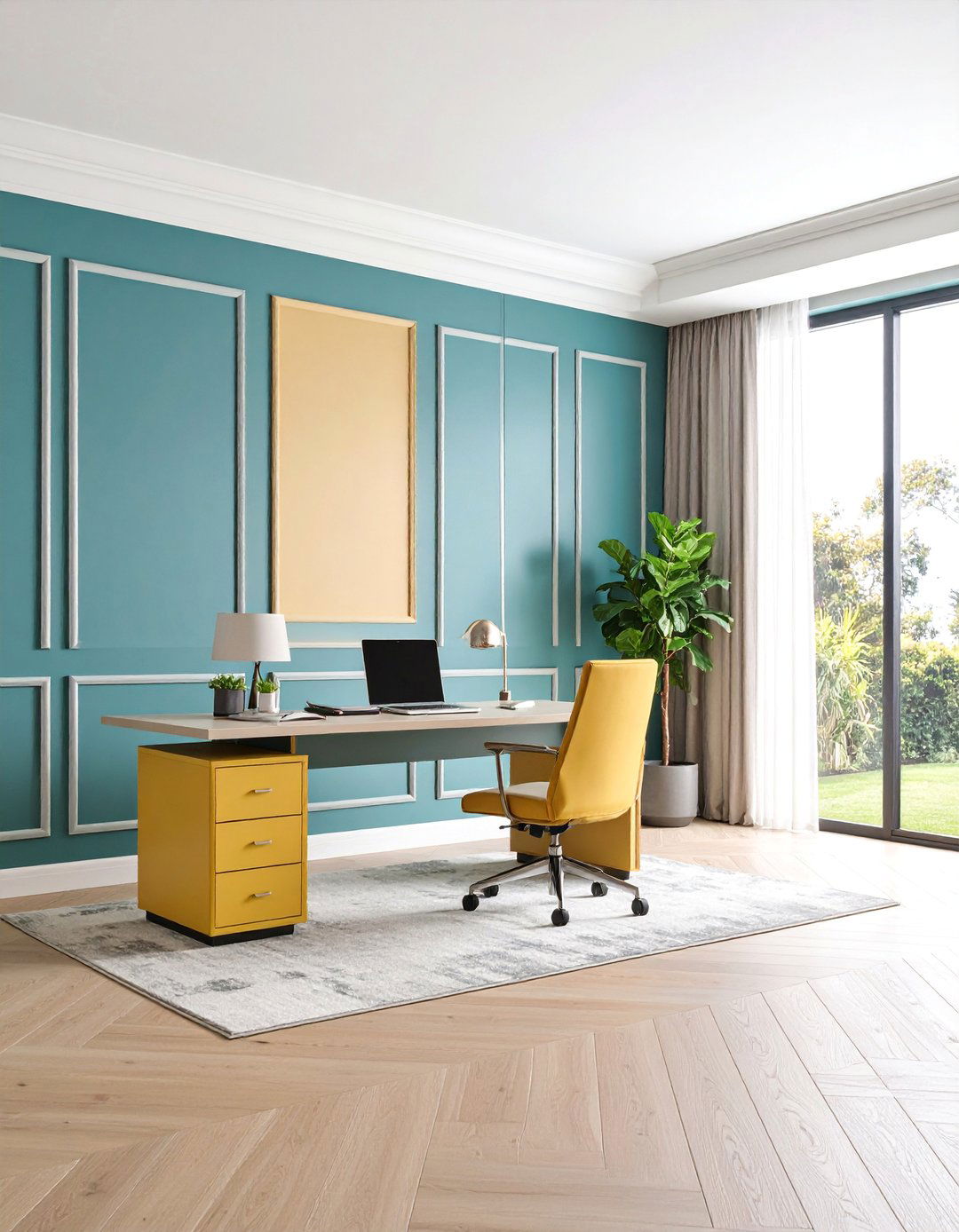
Bridge traditional and contemporary styles using panels of varying widths arranged in sophisticated compositions that feel both classic and current. Combine wide and narrow rectangular panels in asymmetrical arrangements, using consistent molding profiles to maintain visual coherence. This treatment works beautifully in transitional homes, updated traditional spaces, or anywhere classic and modern elements need to coexist harmoniously. The varied proportions create visual rhythm while the consistent detailing provides unity. Paint all elements in coordinating neutral colors that work with both traditional and contemporary furnishings. Include a mix of furniture styles and accessories that reflect both design sensibilities. This approach demonstrates how classical proportions can be reinterpreted for contemporary living while maintaining architectural character and visual sophistication.
24. Textured Wallpaper Panel with Molding Frame

Enhance wallpaper installations by framing textured or patterned sections with coordinating molding that creates defined panel areas and adds architectural structure. Choose wallpapers with interesting textures, patterns, or metallic elements, then frame each section with simple molding painted to complement the wall covering. This treatment works beautifully in powder rooms, dining rooms, or accent walls where pattern and texture are desired without overwhelming the space. The molding frames contain busy patterns while adding architectural credibility to wallpaper installations. This approach allows for bold pattern choices while maintaining sophisticated proportions. Include lighting that highlights both the wallpaper texture and molding shadows to create dynamic visual interest throughout the day.
25. Multi-Level Baseboard and Quarter Round System
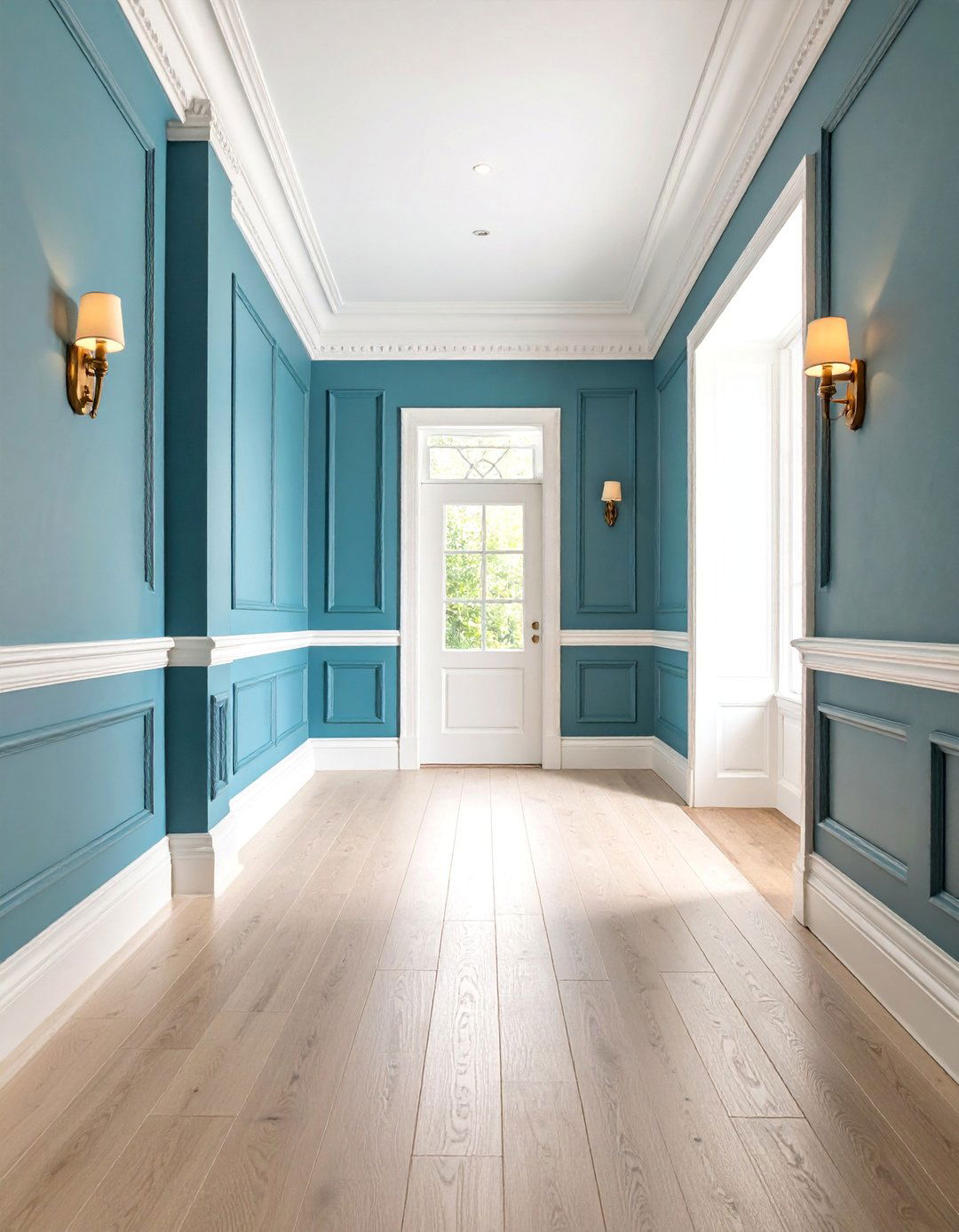
Create sophisticated floor-to-wall transitions using layered baseboard systems that combine multiple molding profiles for rich, dimensional detail at ground level. Install tall baseboards topped with cap molding, then add quarter round at the floor line for complete coverage. This treatment works beautifully throughout homes where attention to detail and traditional craftsmanship are valued. The multi-layer approach creates substantial visual weight at the base of walls while providing complete protection from floor maintenance equipment and daily wear. Paint all elements in coordinating colors that enhance rather than compete with wall and floor finishes. This comprehensive approach to baseboard design demonstrates how simple molding combinations can create sophisticated architectural details that feel both substantial and refined.
Conclusion:
Wall molding offers unlimited possibilities for transforming ordinary spaces into architecturally rich environments that reflect personal style and enhance daily living. From traditional wainscoting that protects and beautifies, to contemporary slat systems that combine form with function, these design elements prove that thoughtful details make the difference between houses and homes. Whether you choose classic elegance or modern minimalism, the key lies in selecting approaches that complement your lifestyle while adding lasting value and character to your most important spaces.


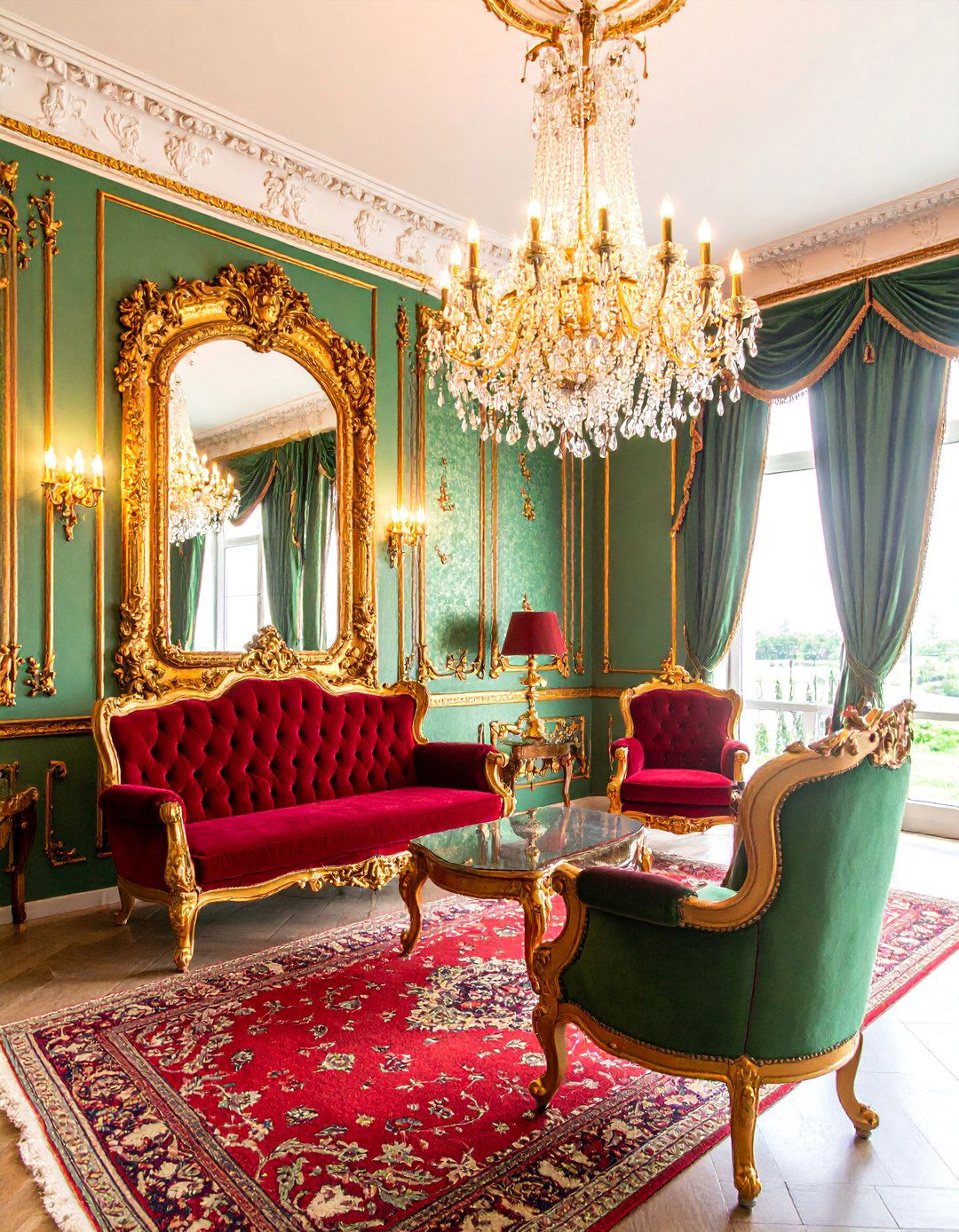

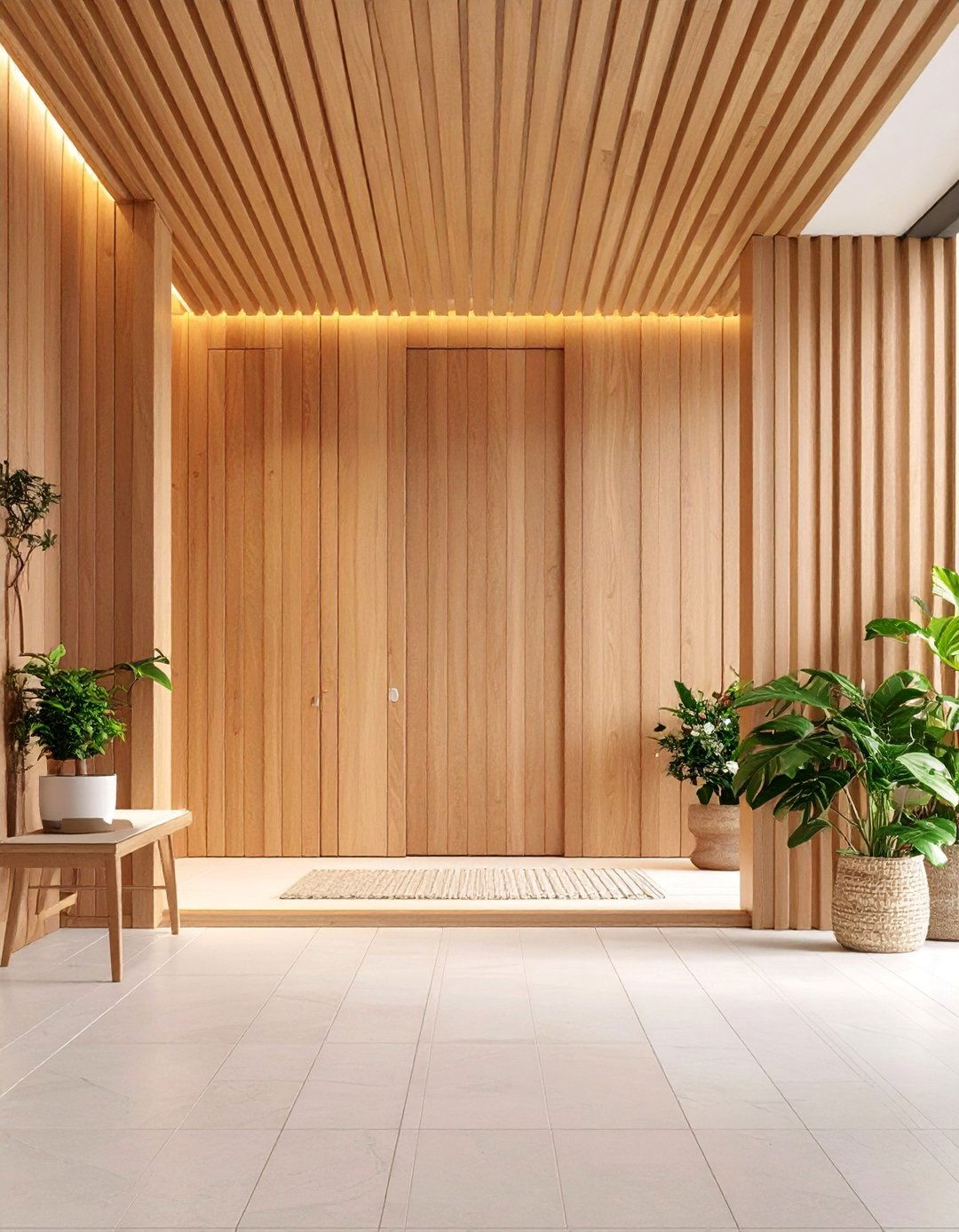
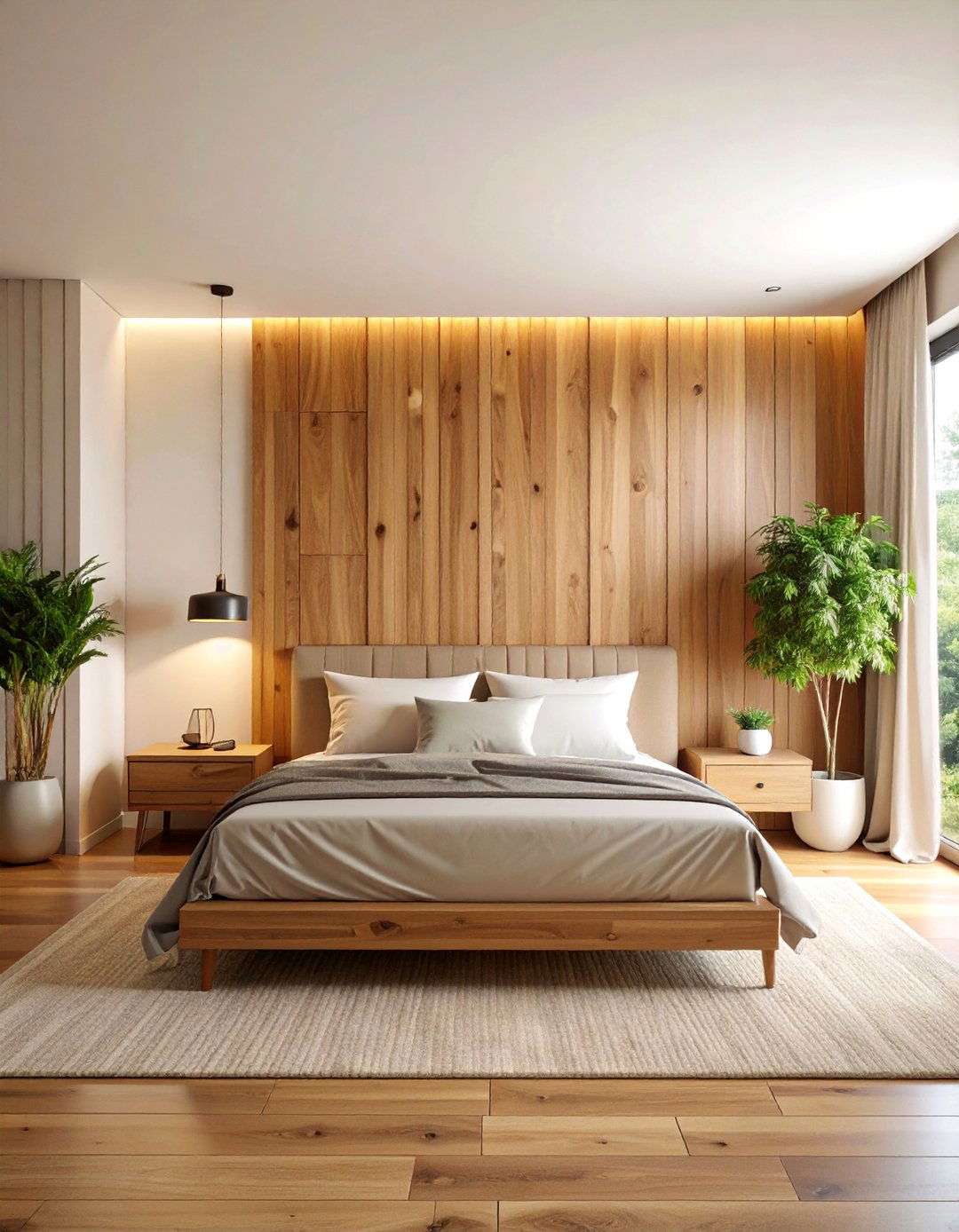
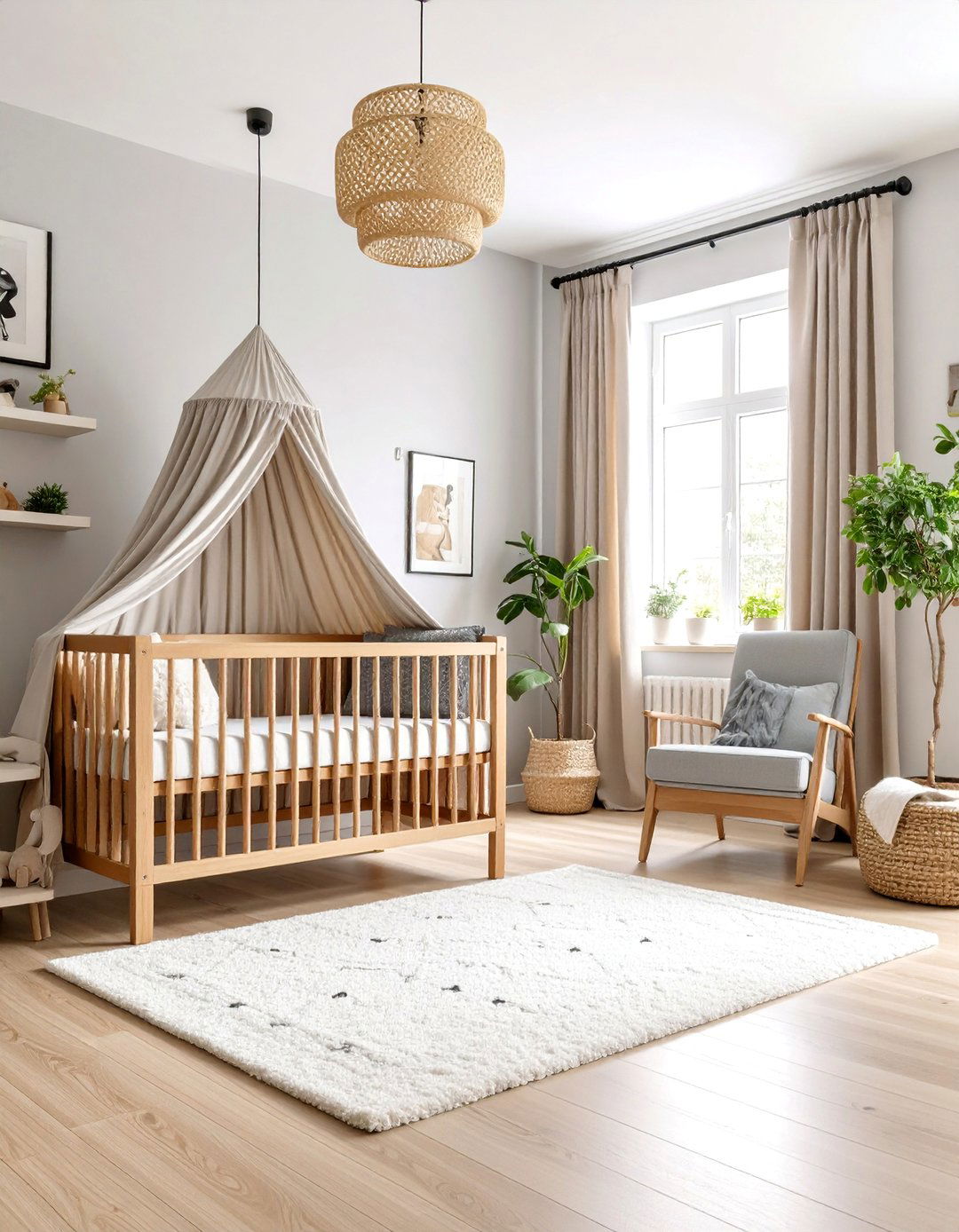
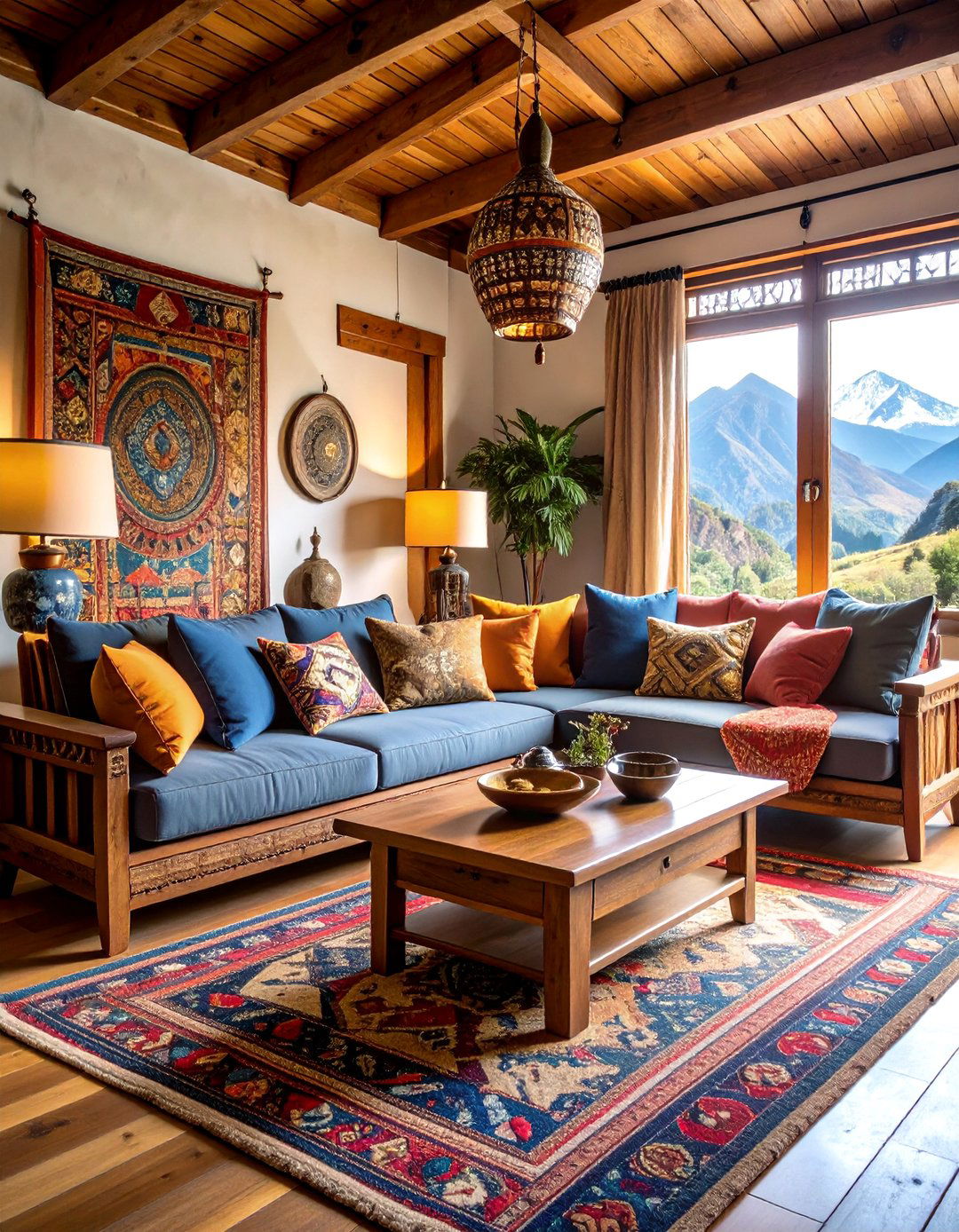


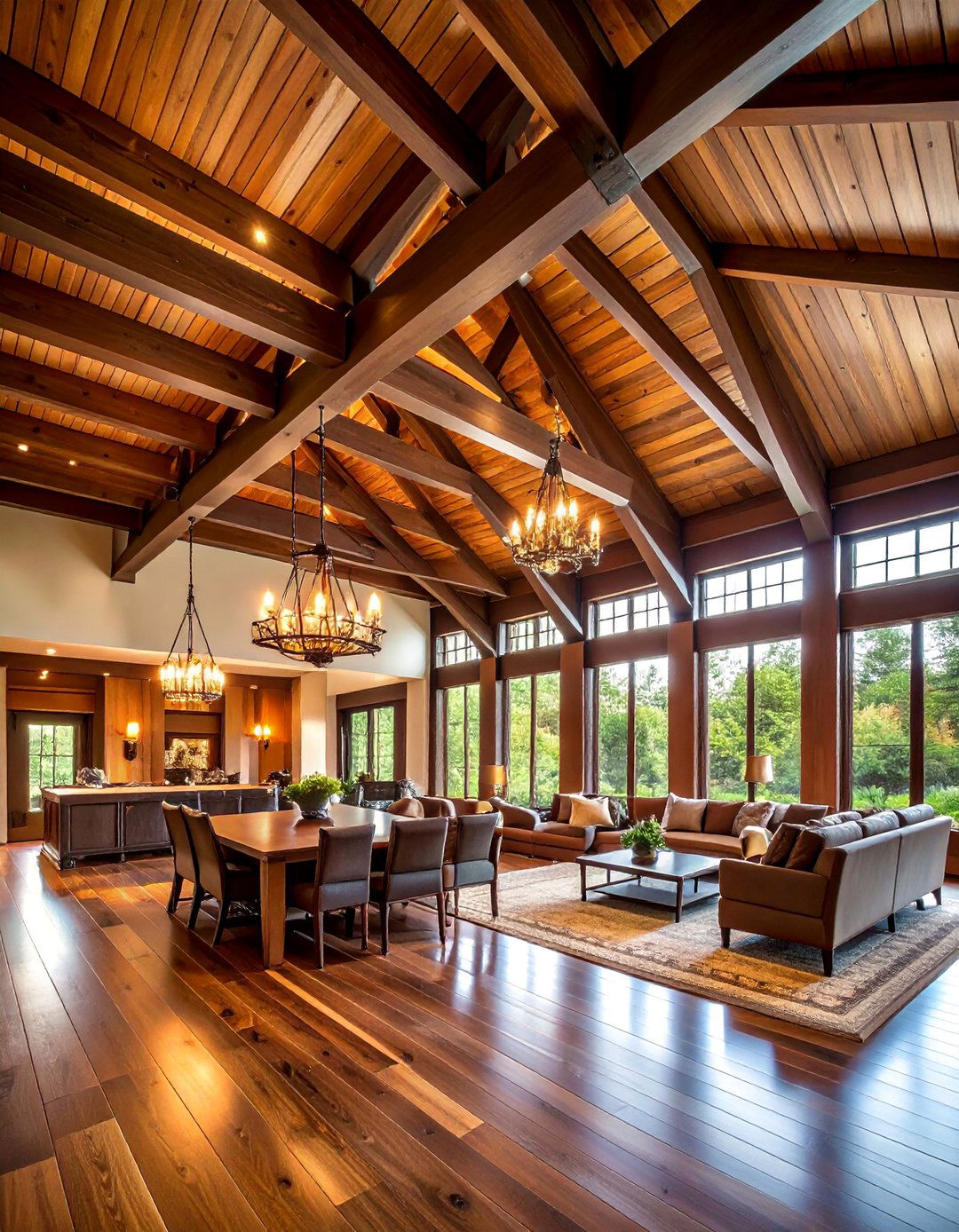


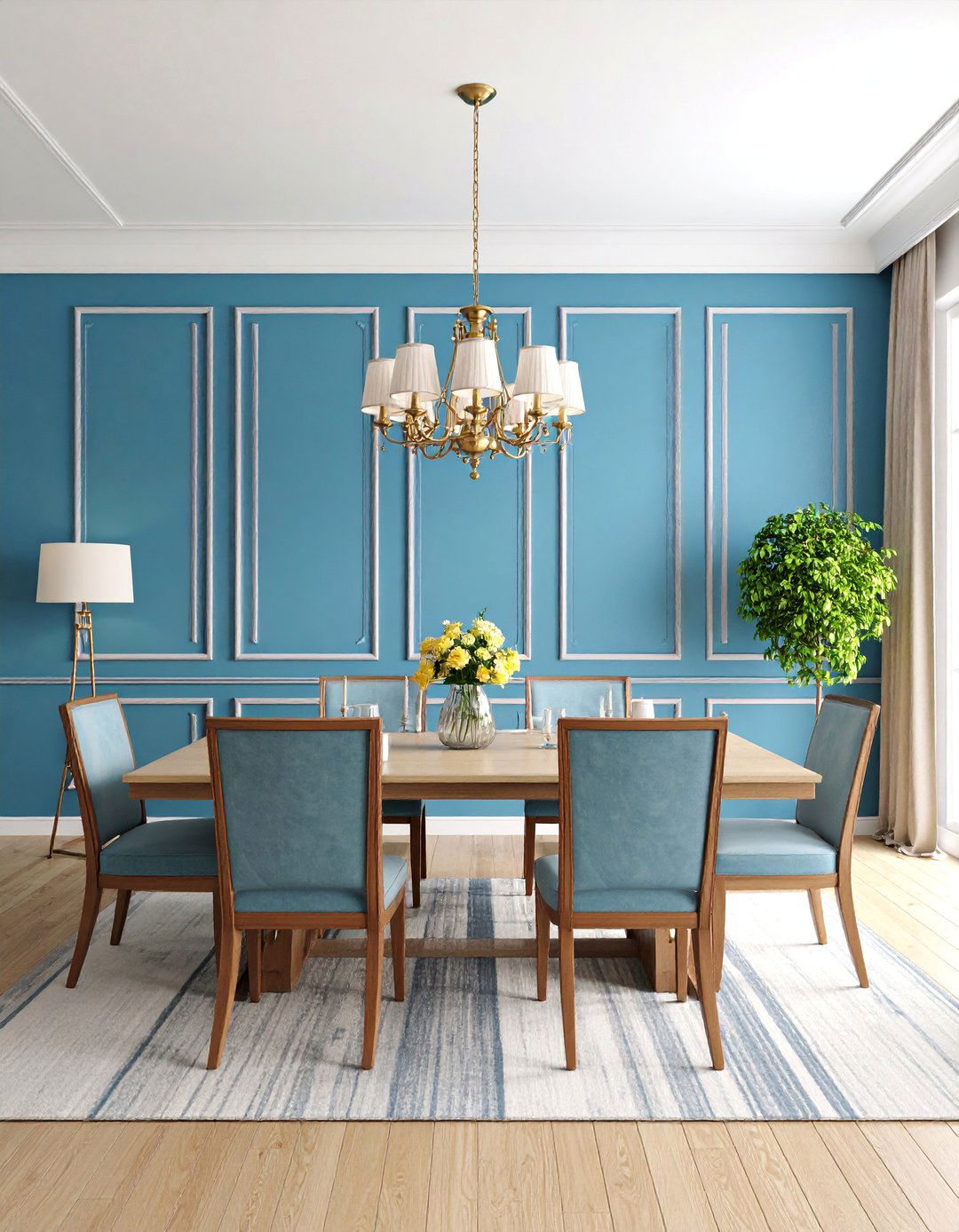
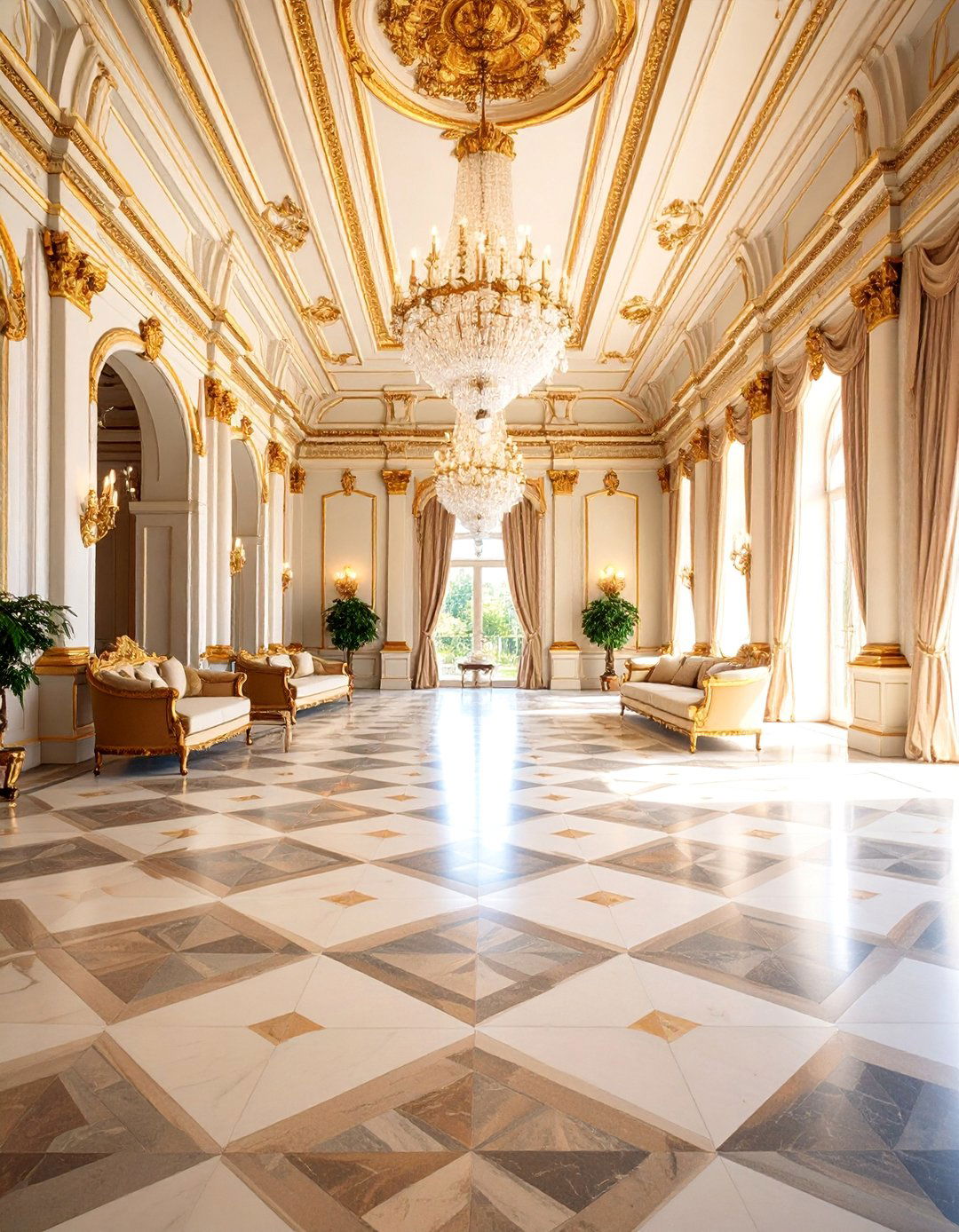

Leave a Reply